Why you can trust Tom's Hardware
The GeForce RTX 3050 focuses primarily on 1080p gaming, so that's where we'll start. Again, these are relatively demanding games, some more than others, so for the next couple of years, we don't expect anything to perform radically worse than what we're showing here — and of course, less demanding games will perform quite a bit better.

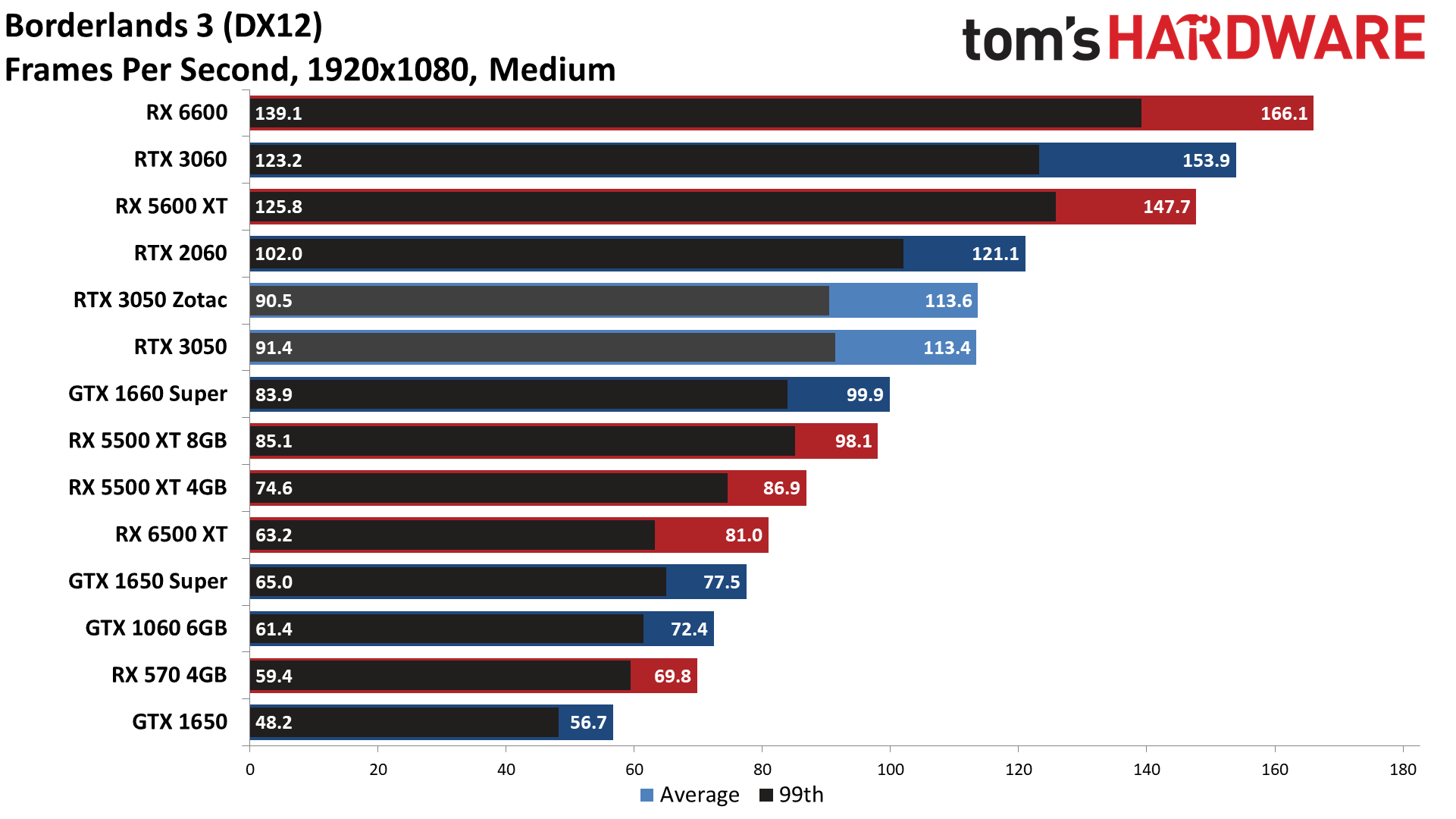
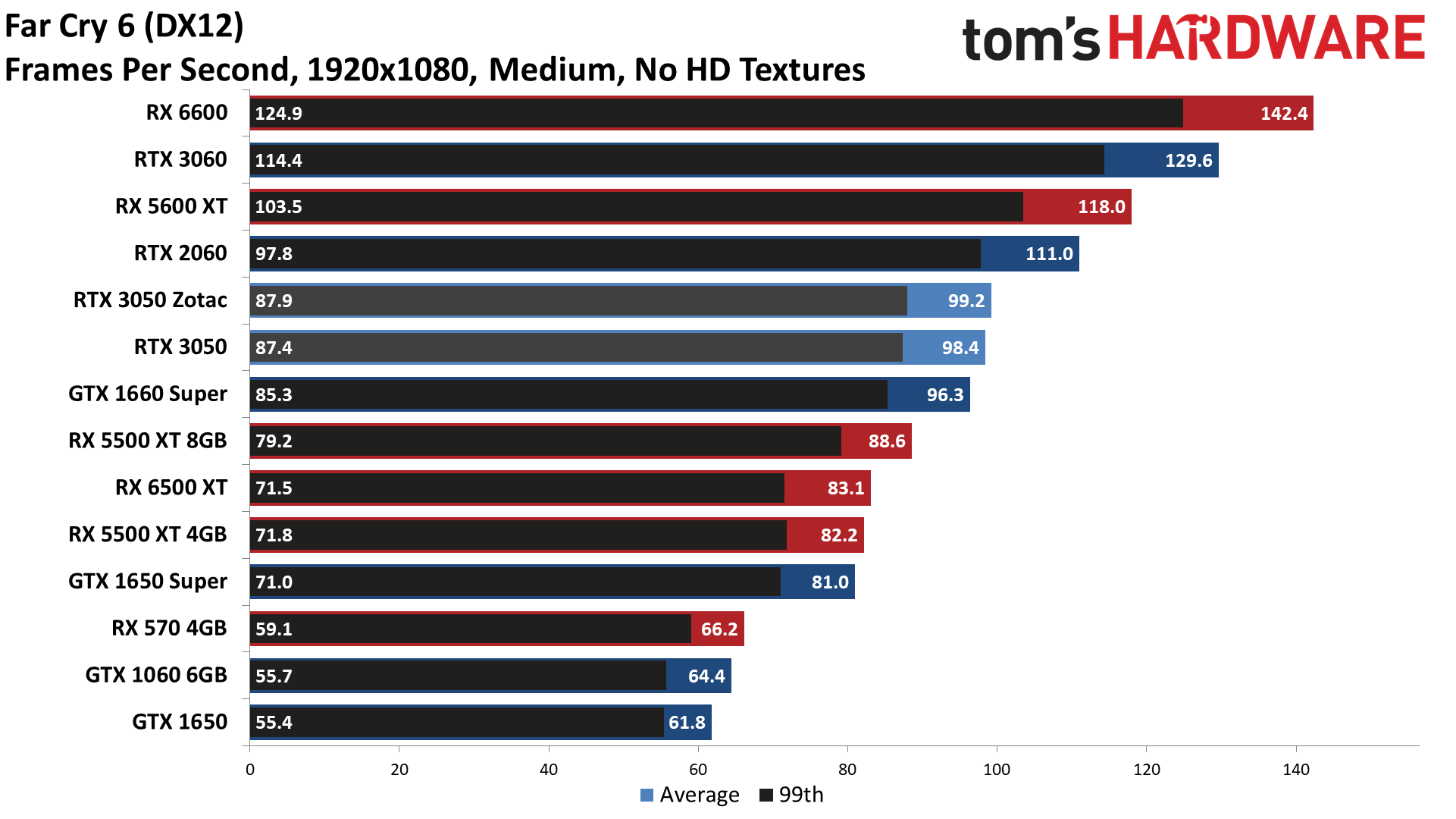
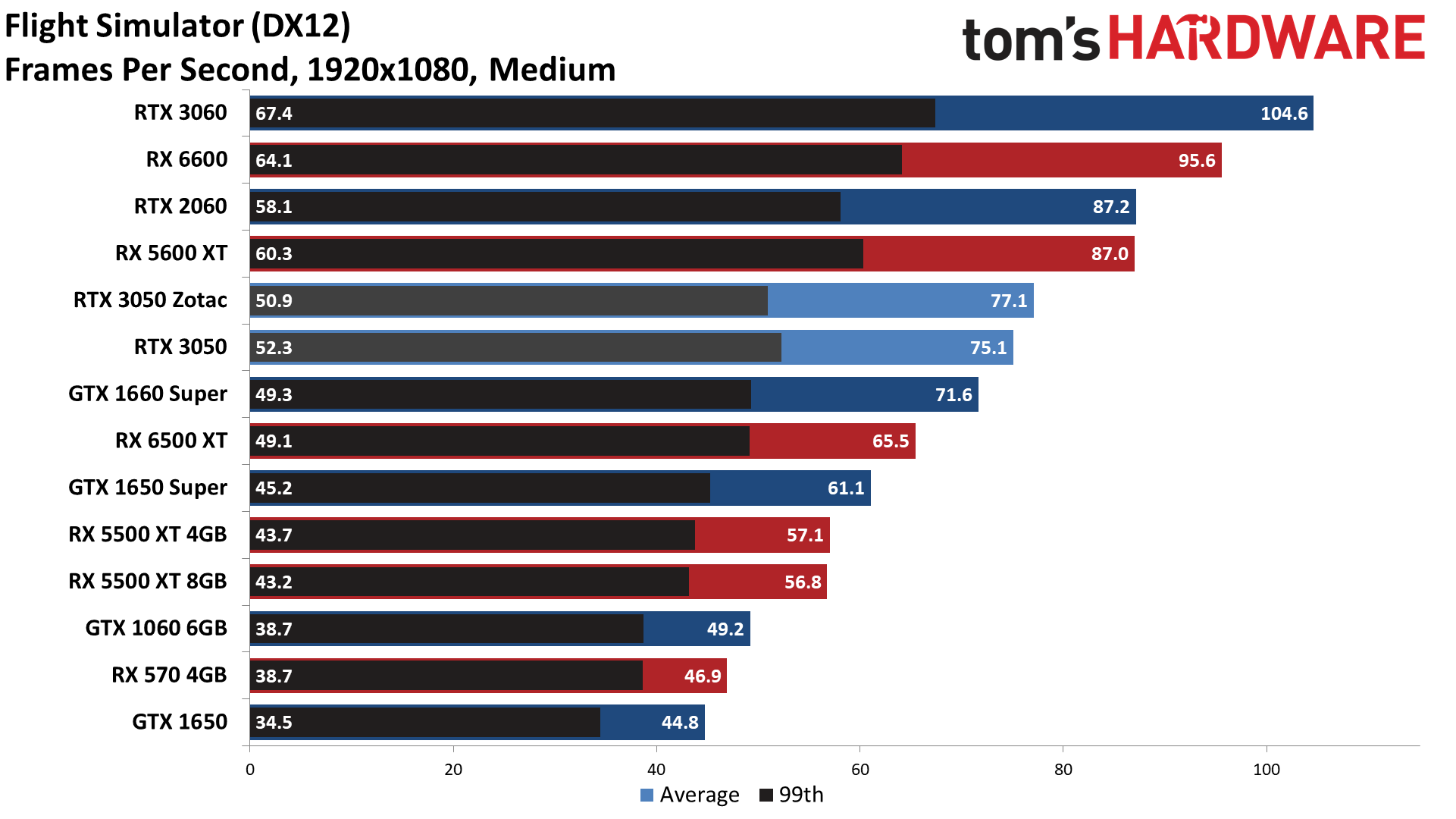
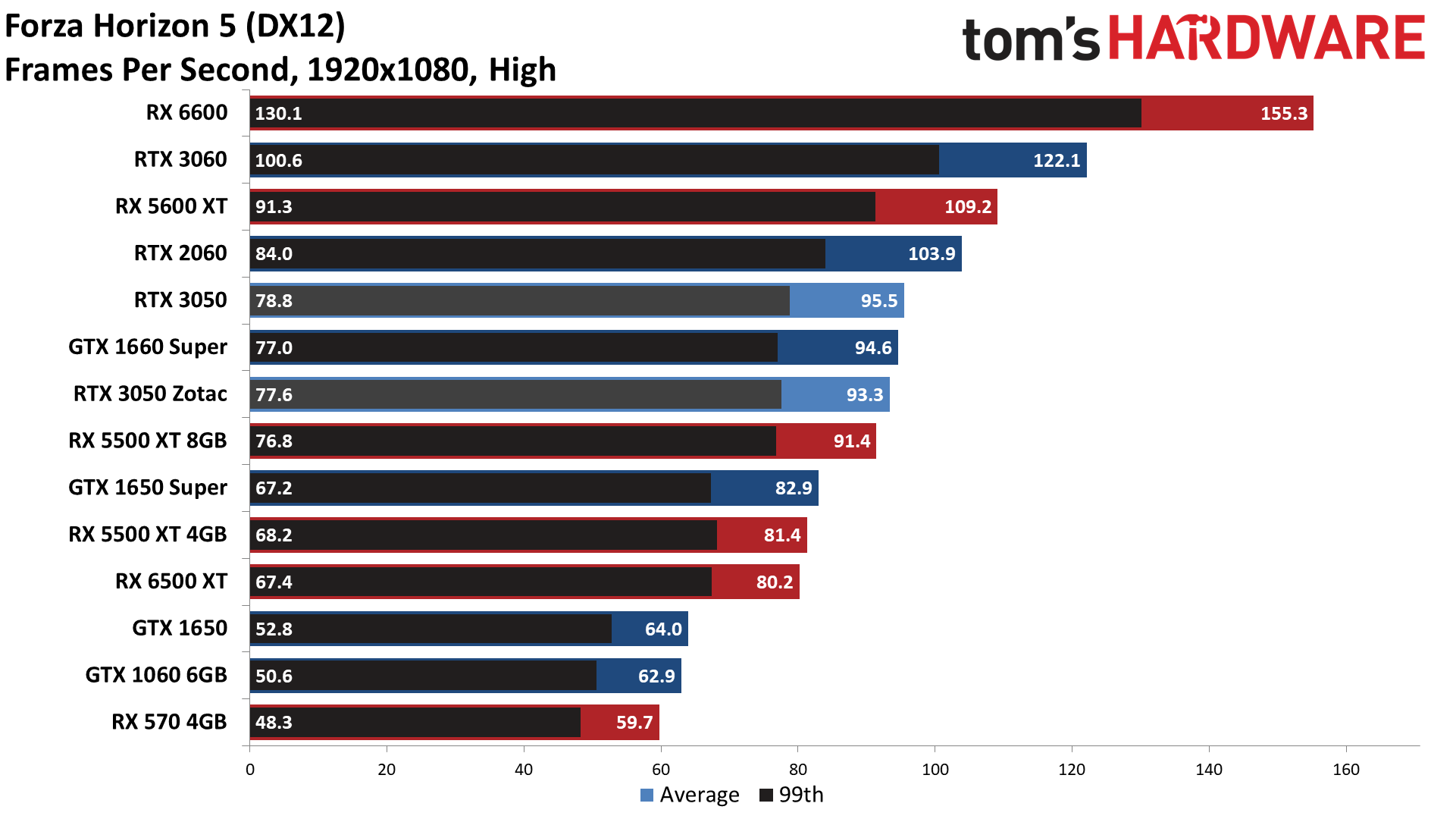
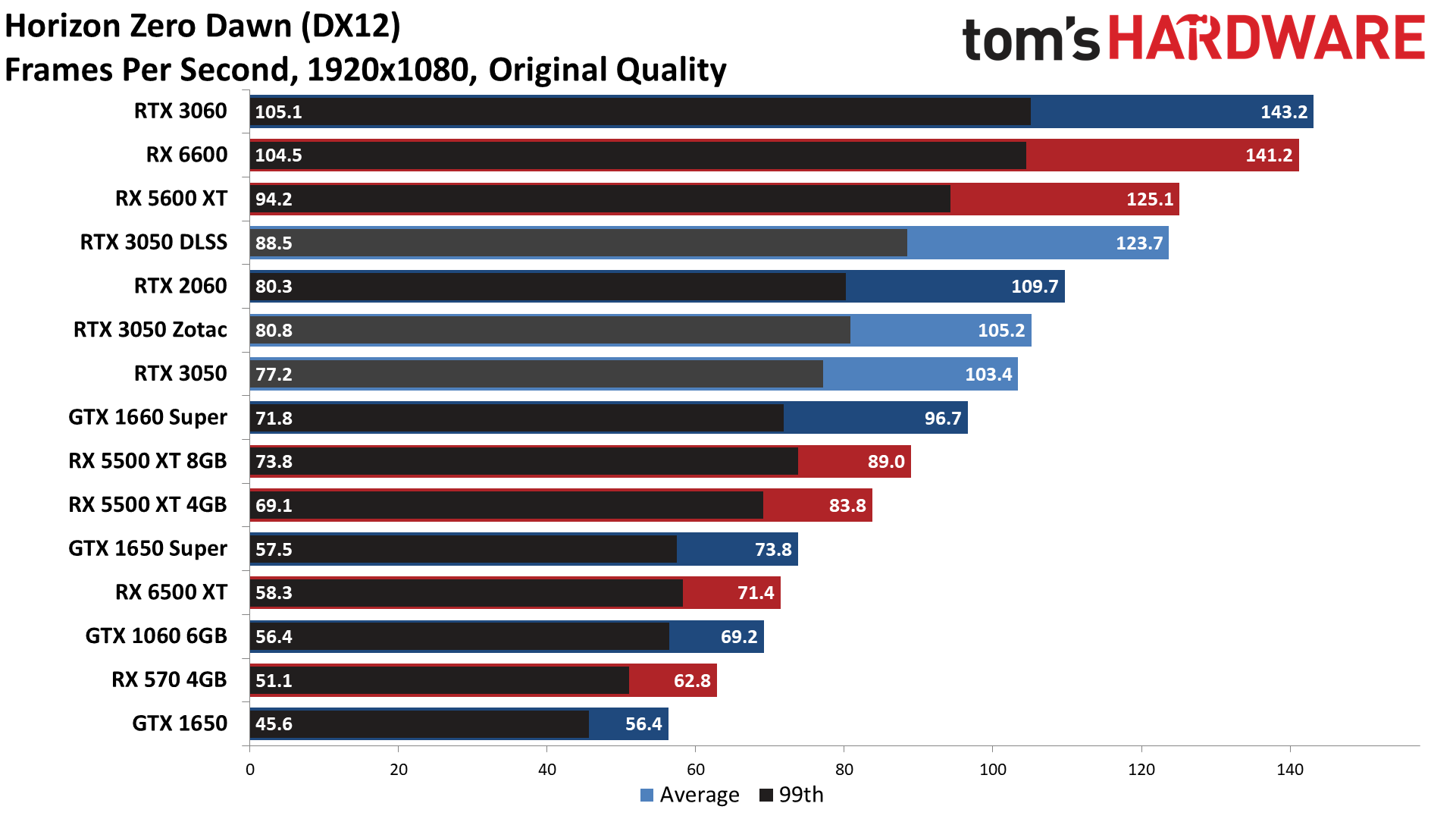

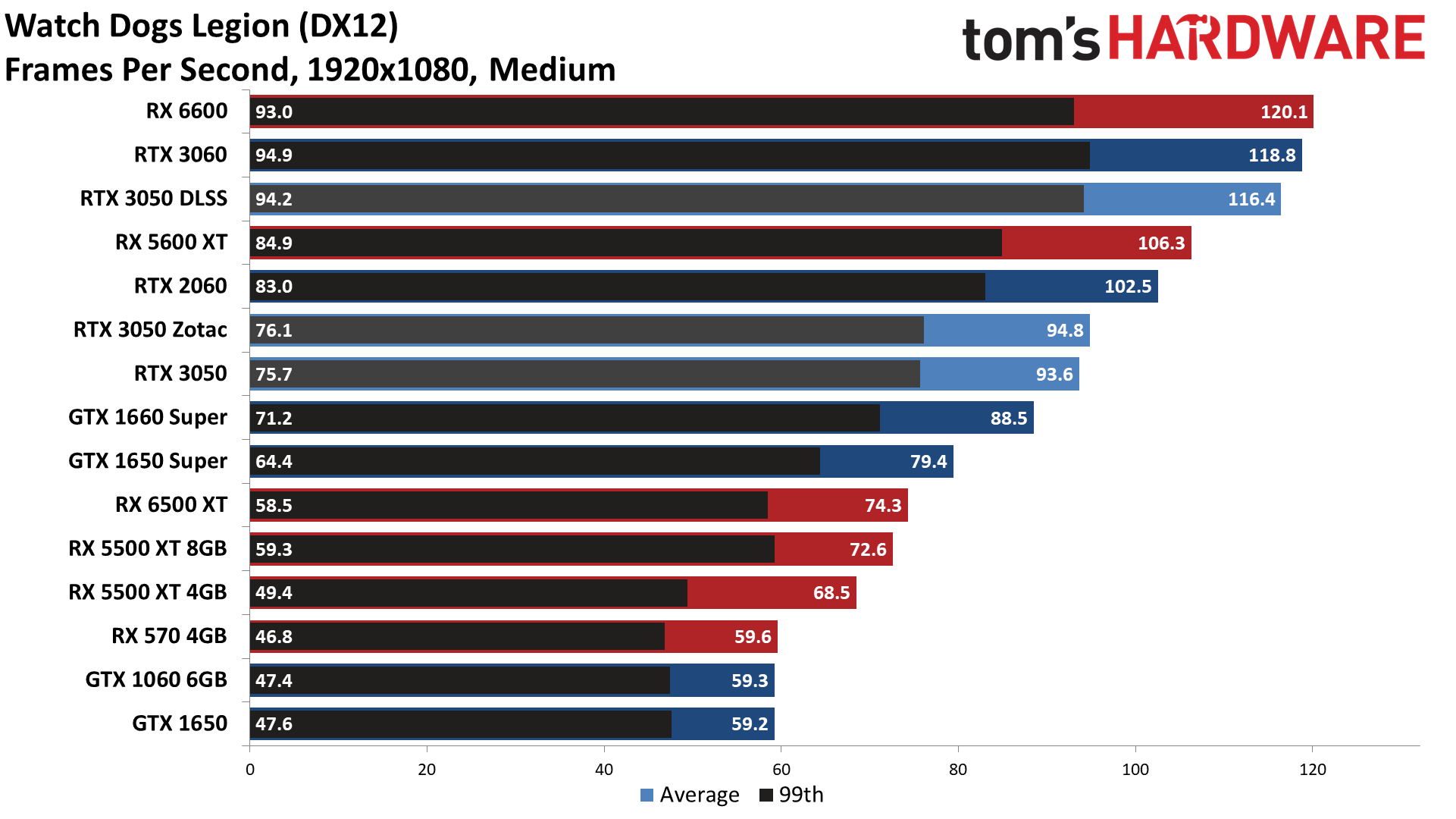
So, about that factory overclock… it's a theoretical 1.7% boost in clock speed, which is barely more than the margin of error for gaming benchmarks. Overall, the Zotac card was 0.7% faster than the EVGA reference clocked card, but Forza Horizon 5 actually ran 2% slower — and that occurred at all three tested settings. So, if you were hoping for some big revelation thanks to a meager overclock, this obviously isn't it.
Performance across our test suite was well above 60 fps, ranging from a low of 77 fps in Flight Simulator to a high of 114 fps in Borderlands 3. While we haven't maxed out the settings, in general, medium to high quality looks very good, and performance tends to be significantly higher than at maximum quality. Let's go ahead and move on to our ultra settings.
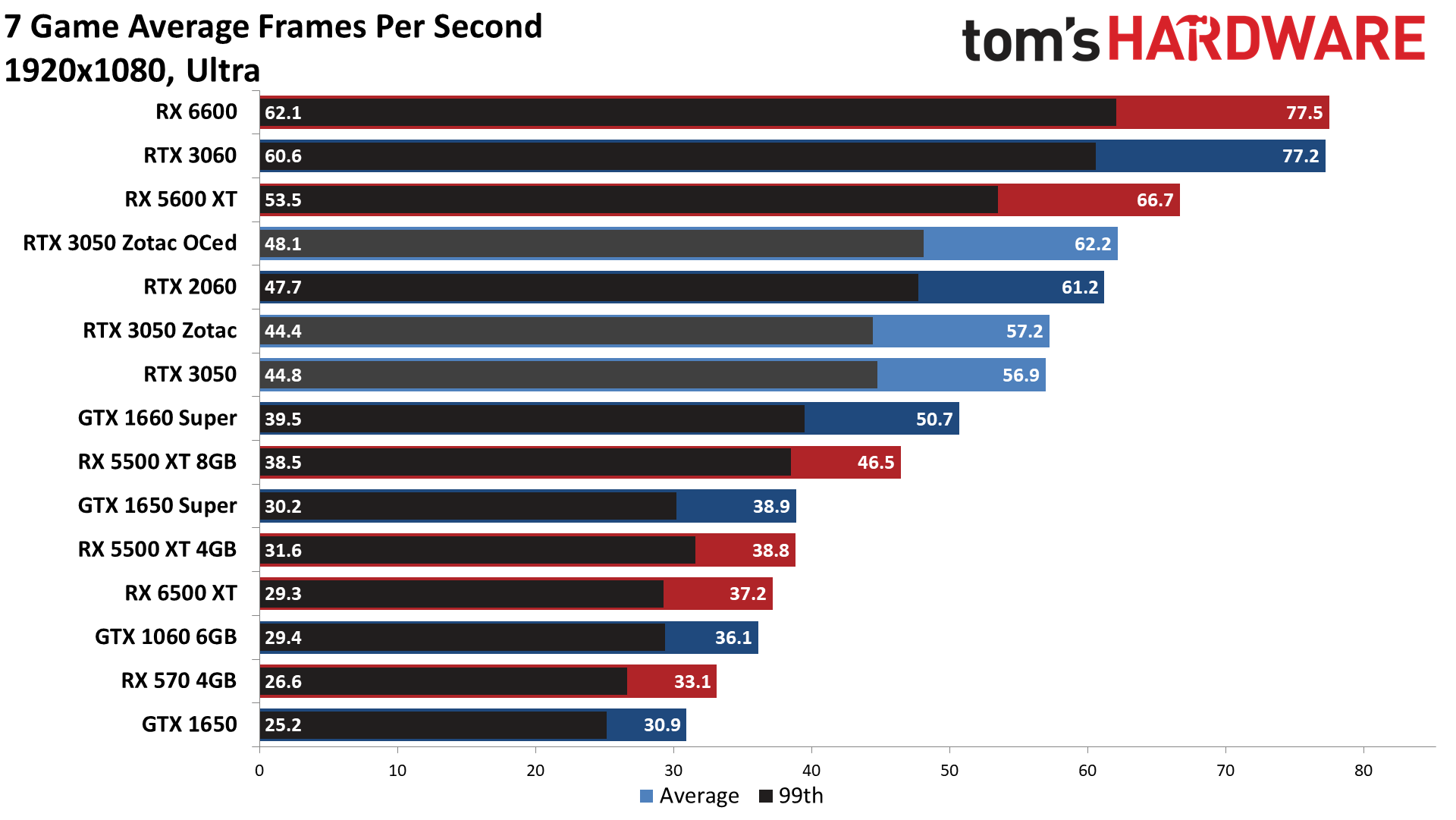
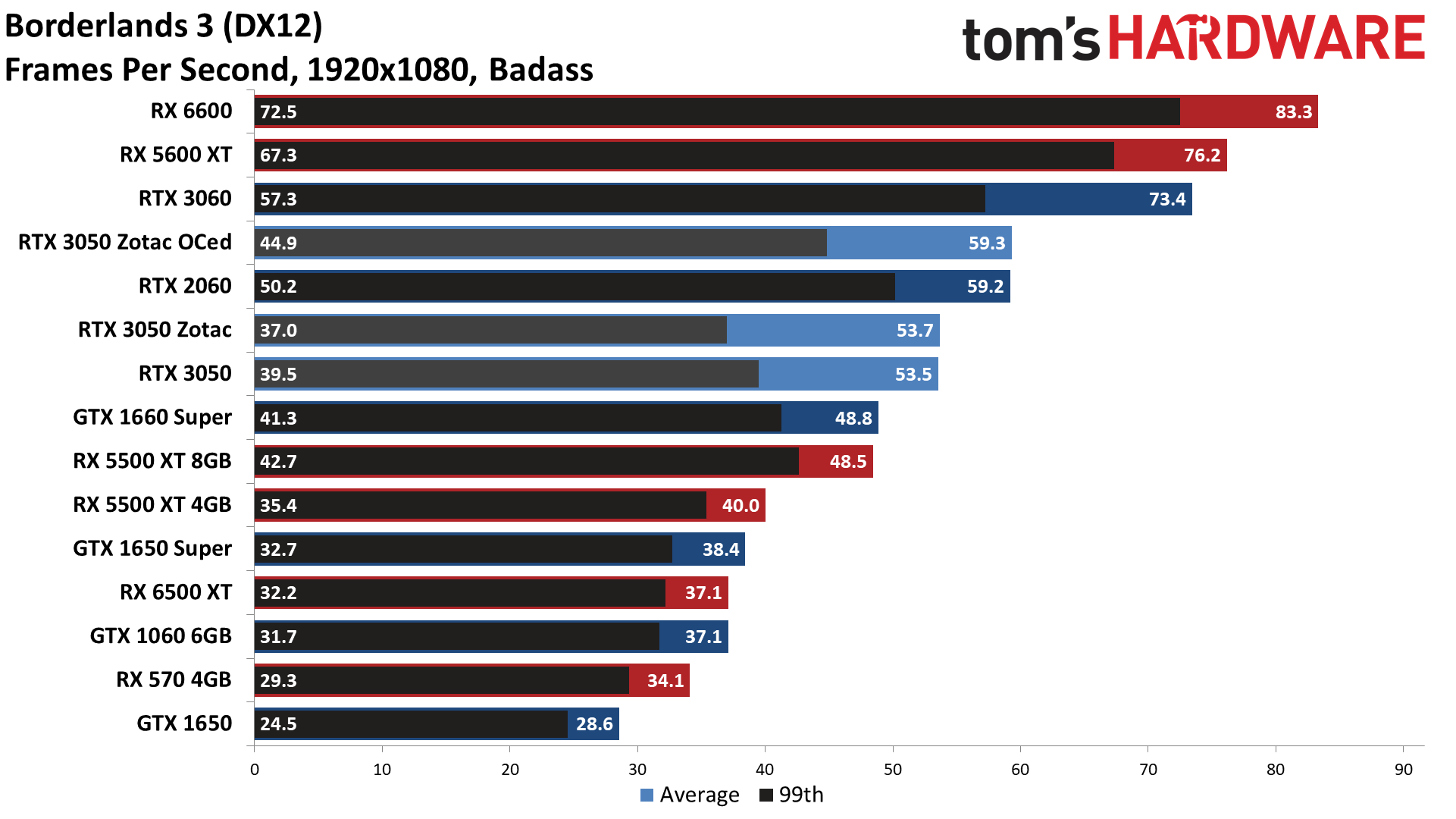
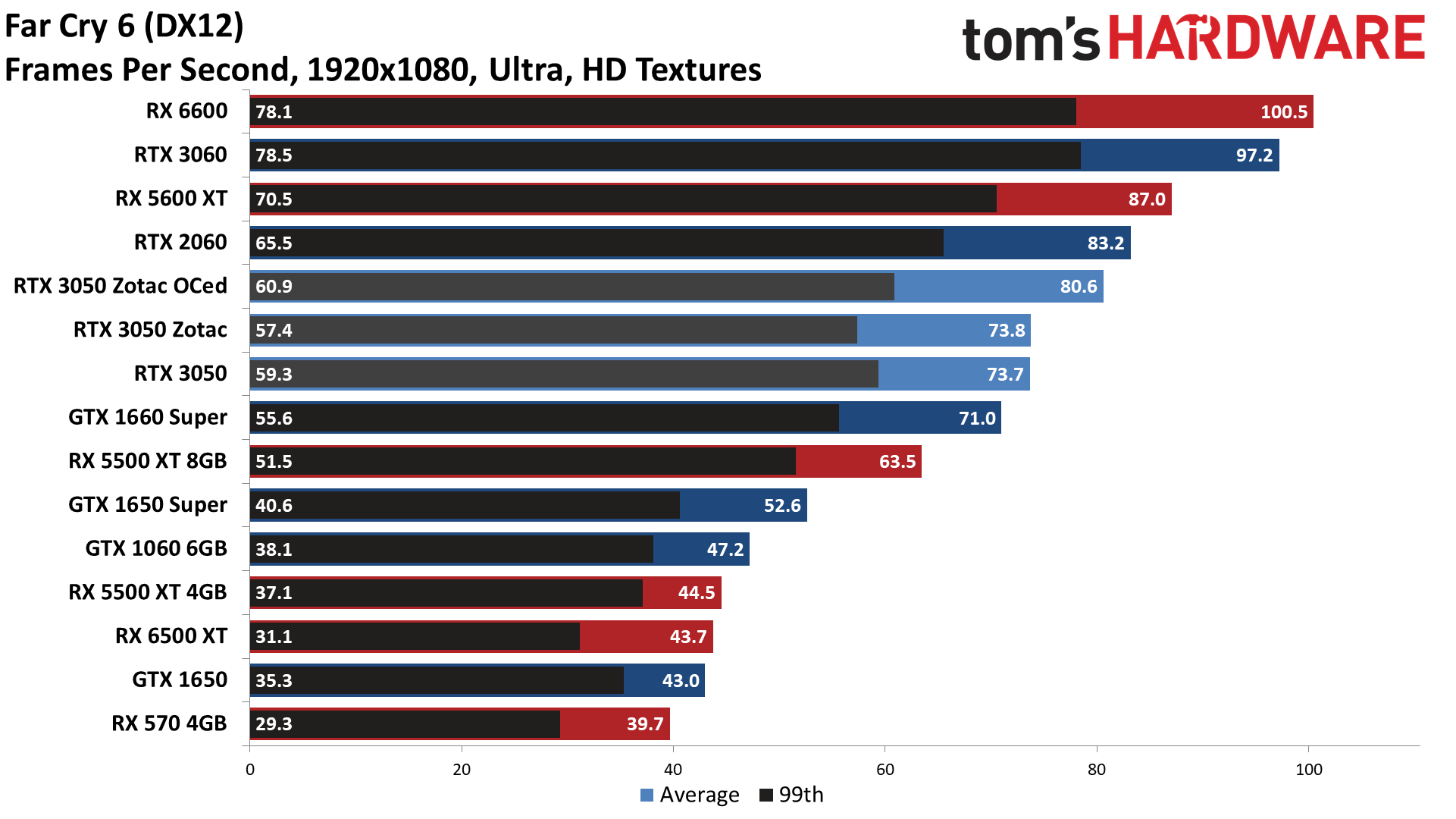
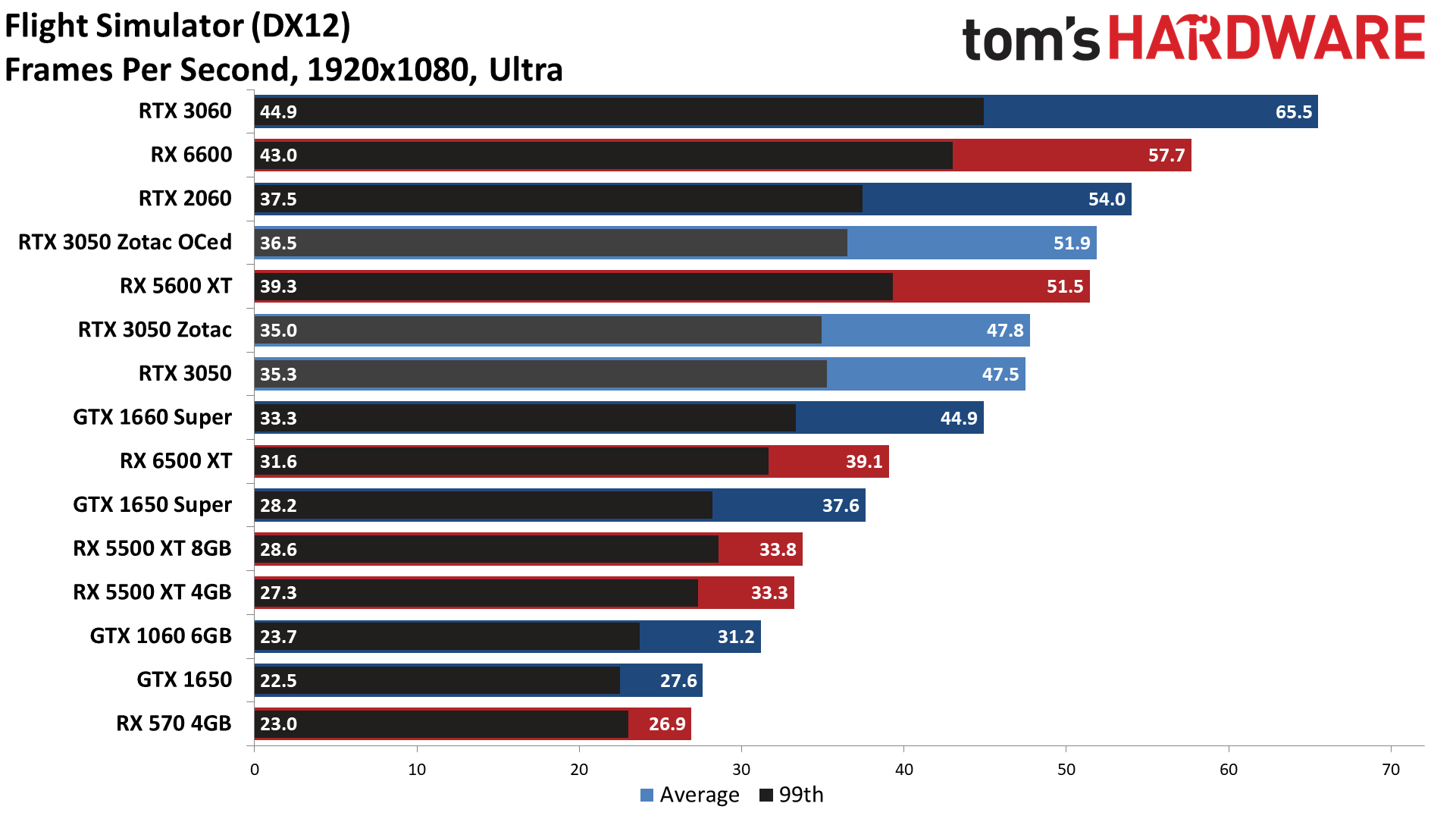
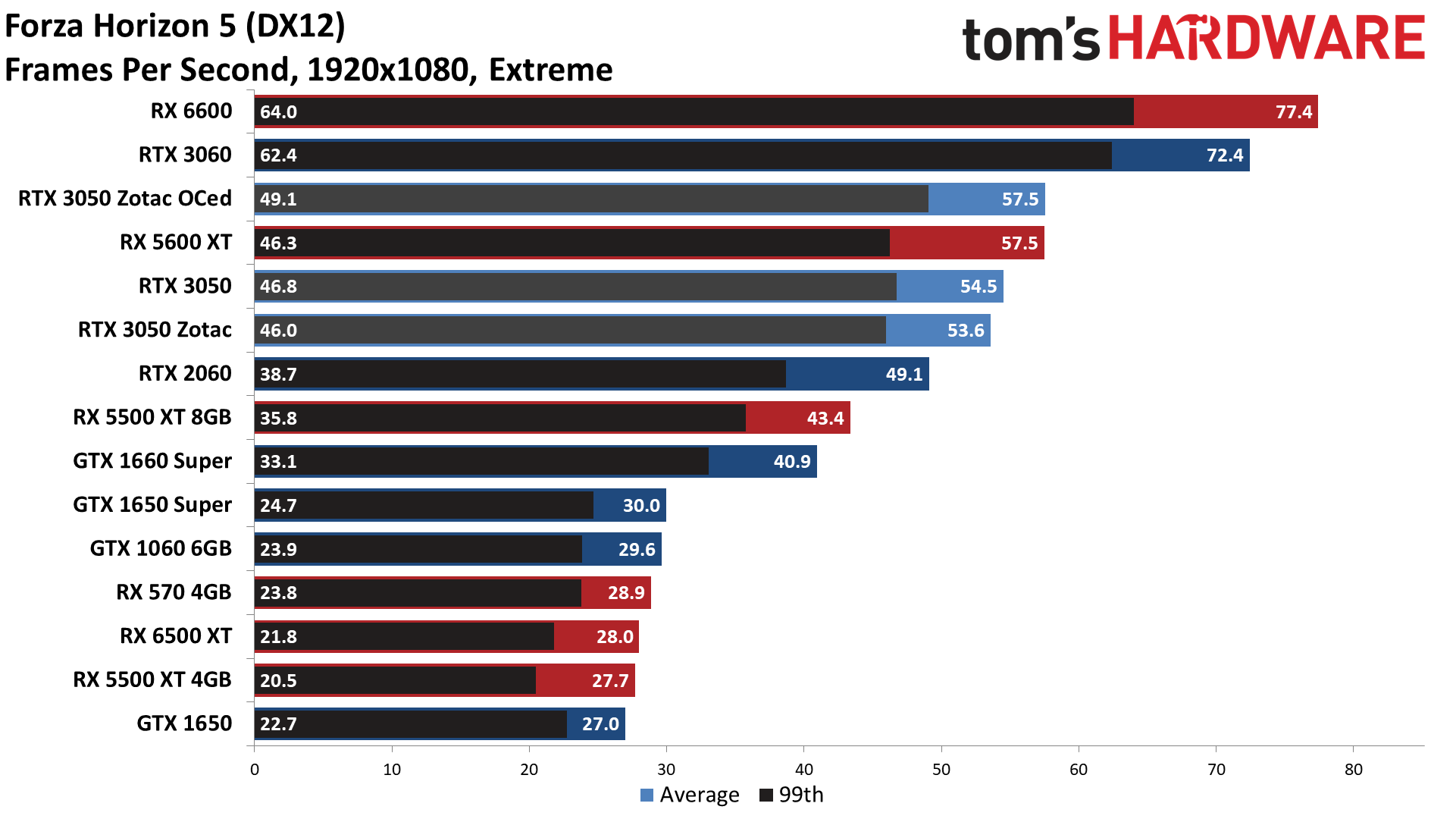

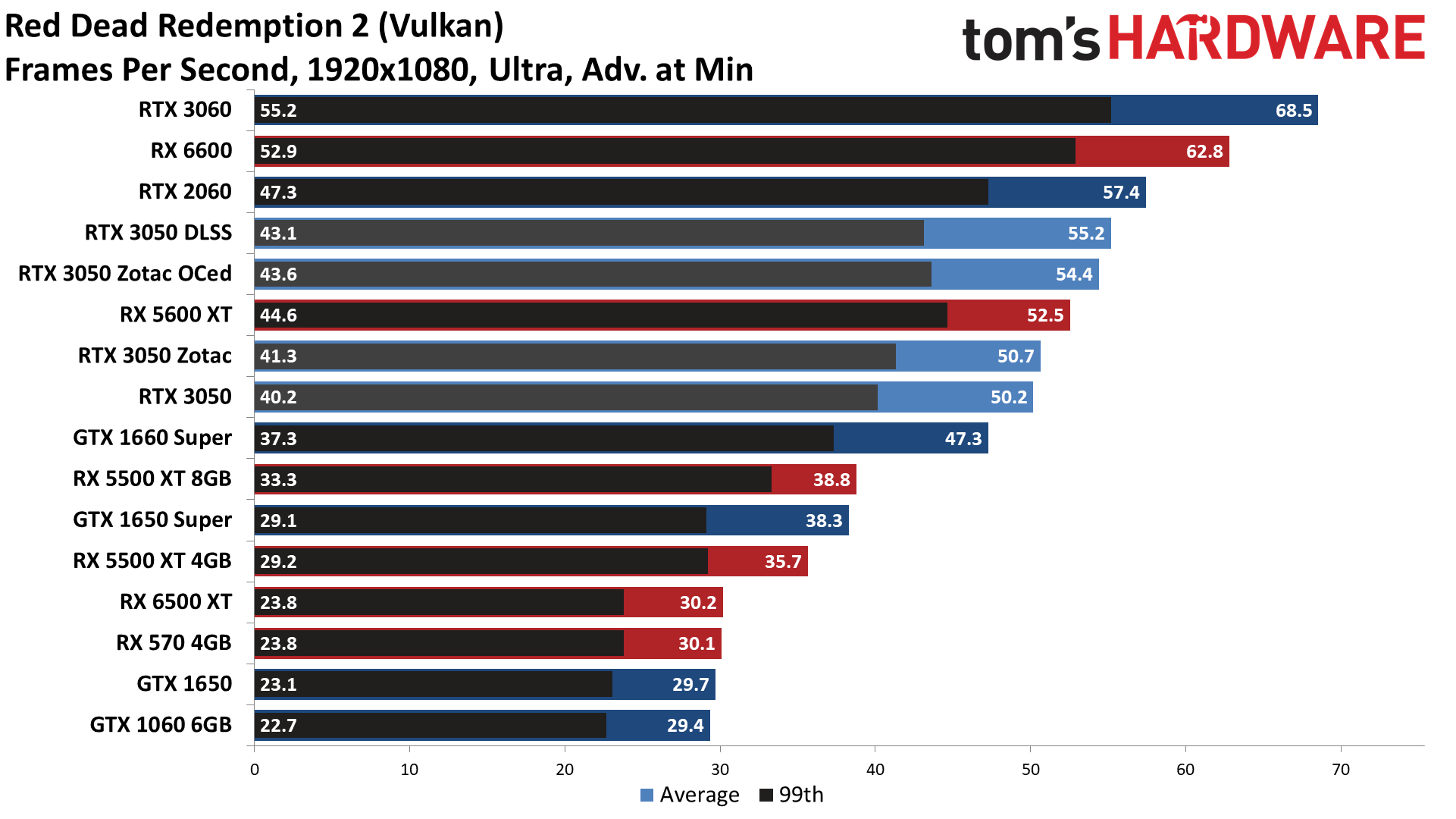
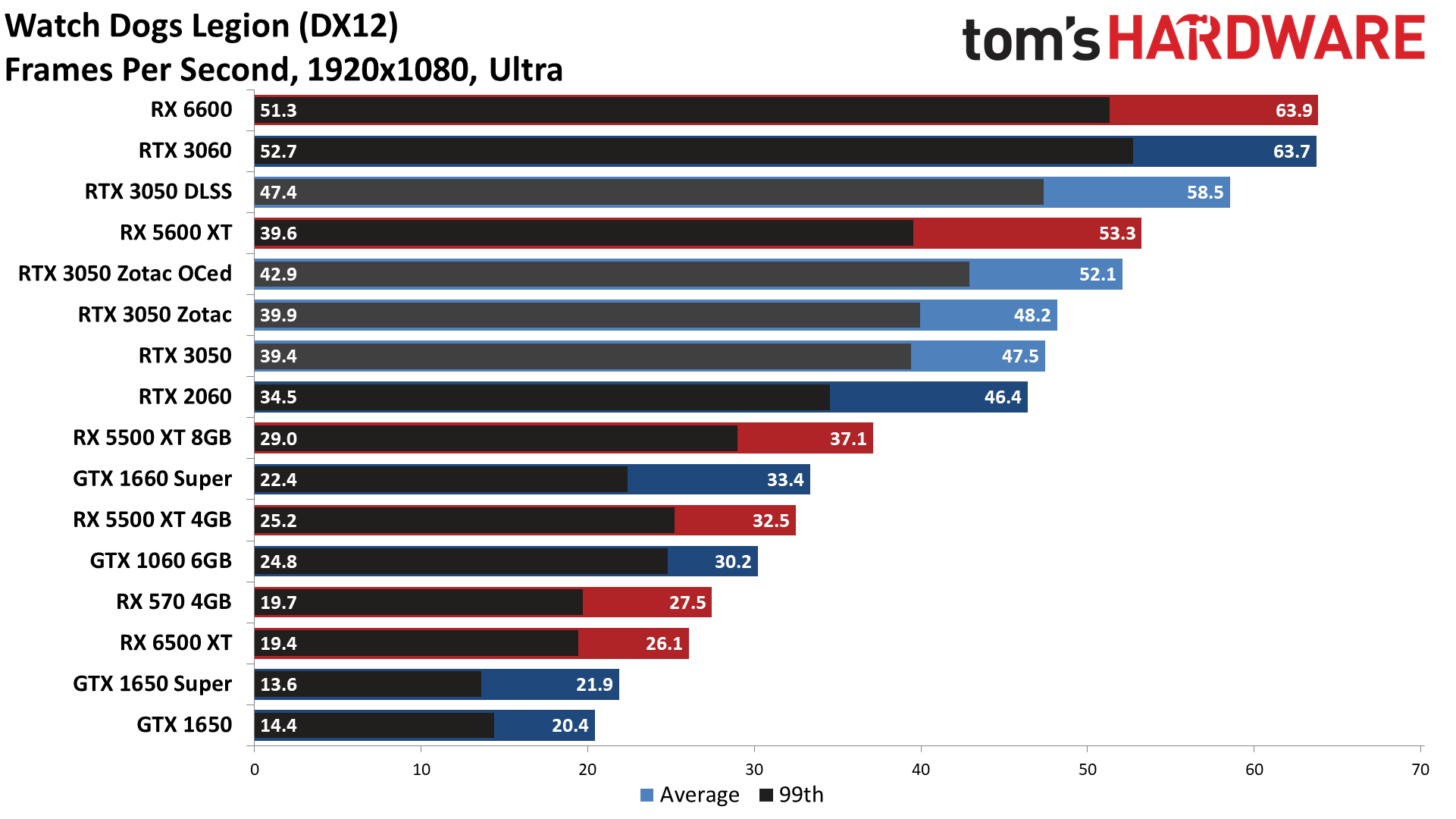
As expected, the performance delta between the Zotac and EVGA cards doesn't change much. This time the Zotac card was a scant 0.5% faster overall, well within the margin of error. Of course, our manual overclock delivered far more substantive gains.
We overclocked the GPU cores by 11% and the GDDR6 memory by 14%, so in theory, the best-case results will be up to 14% faster. In practice, other factors come into play, but performance still improved by an average of 8.6% overall. The smallest improvements we measured were in Forza Horizon 5 and Red Dead Redemption 2, where performance was still 7% faster with the overclock. The biggest increase came in Borderlands 3, with a 10% improvement.
A lot of the gains likely come from the memory overclock, as in general, the RTX 3050 lacks memory bandwidth compared to other RTX GPUs. Consider the RTX 3060. It has the same reference boost clock of 1777MHz, but 40% more GPU cores; meanwhile, it has 61% more memory bandwidth. If the RTX 3060 was relatively balanced — and it does appear to be — then the stock RTX 3050 would be less balanced. Boosting the memory clock by 14% would thus restore balance to the GeForce. (Sorry-not-sorry.)
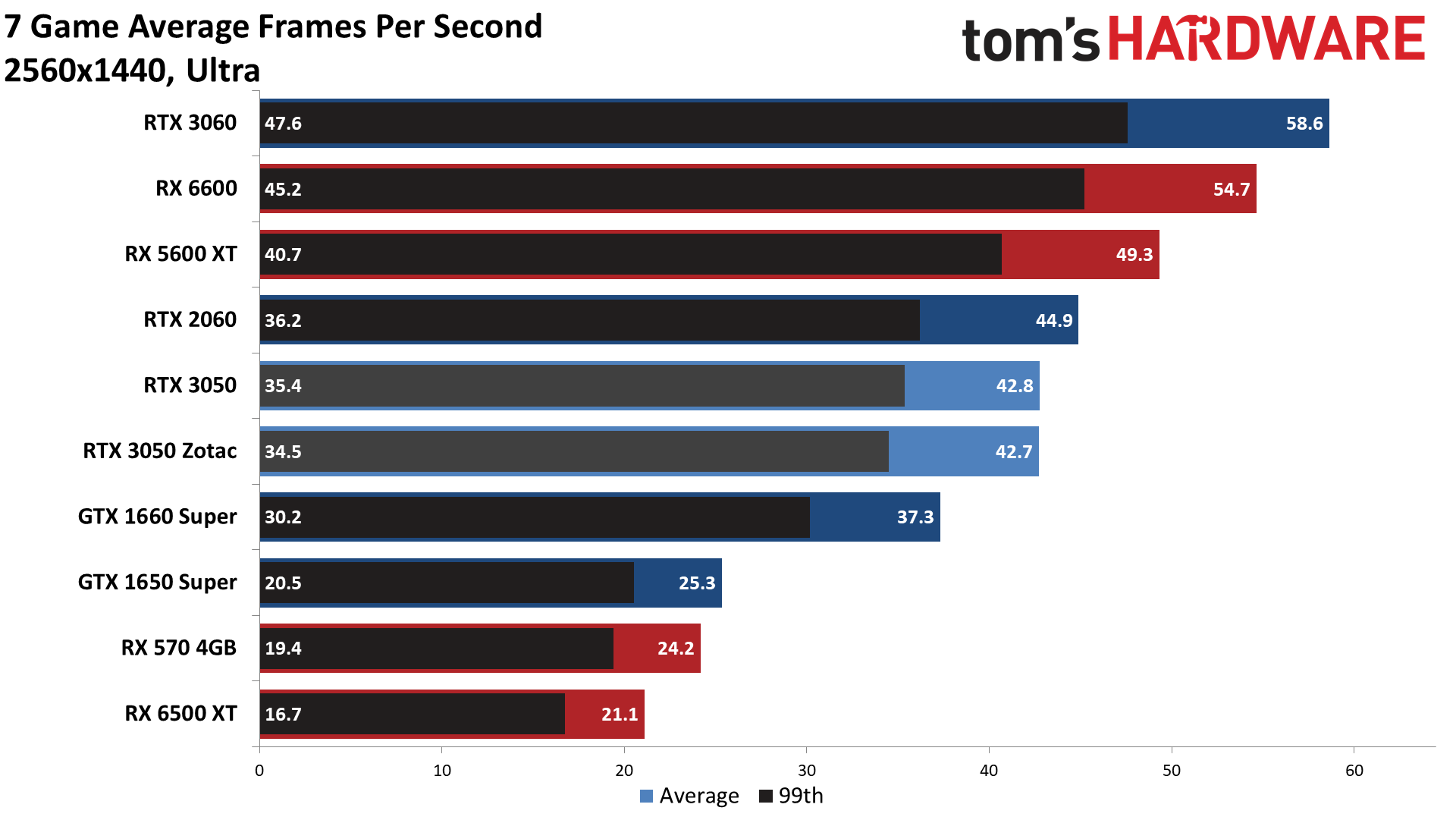
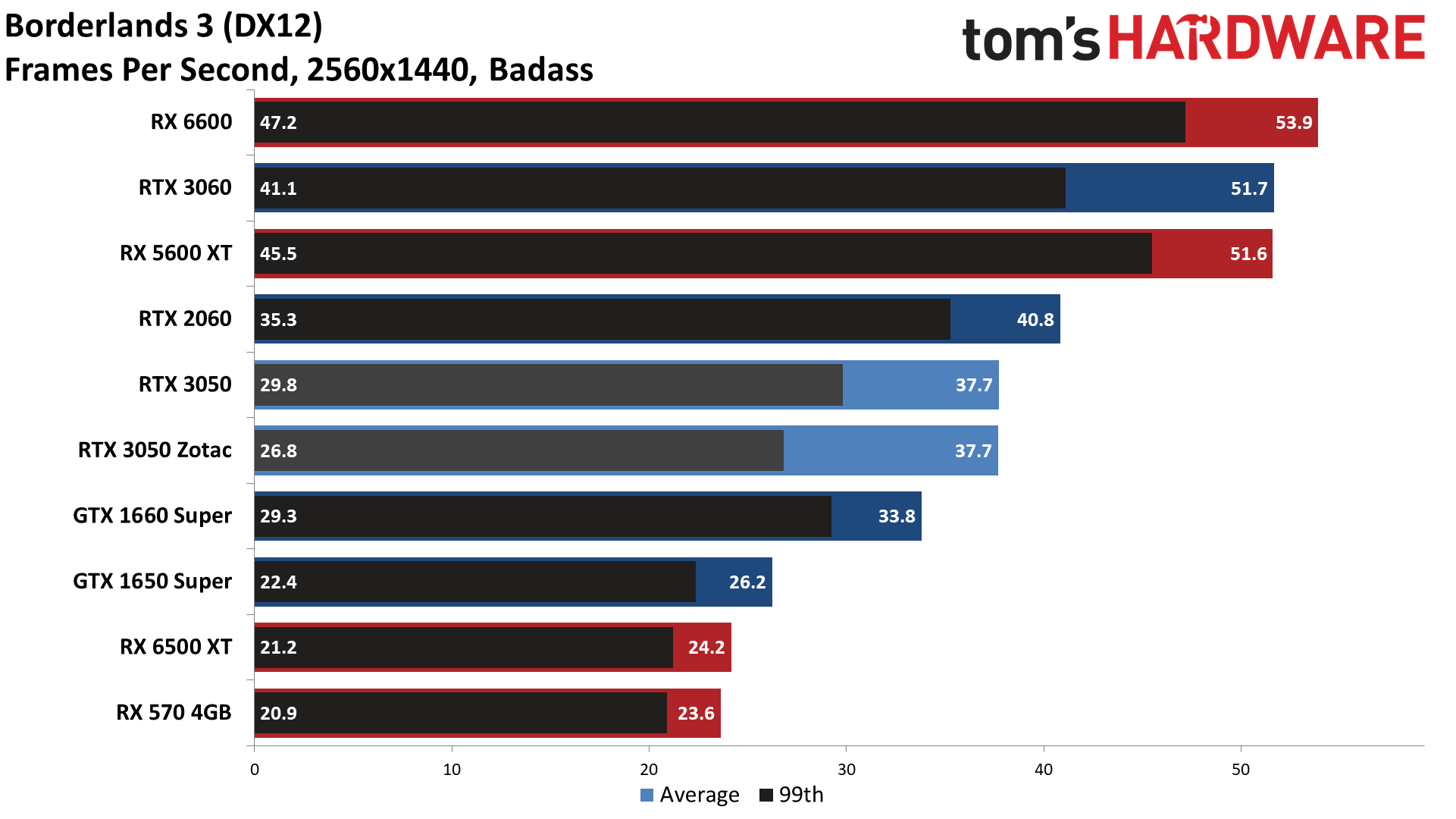

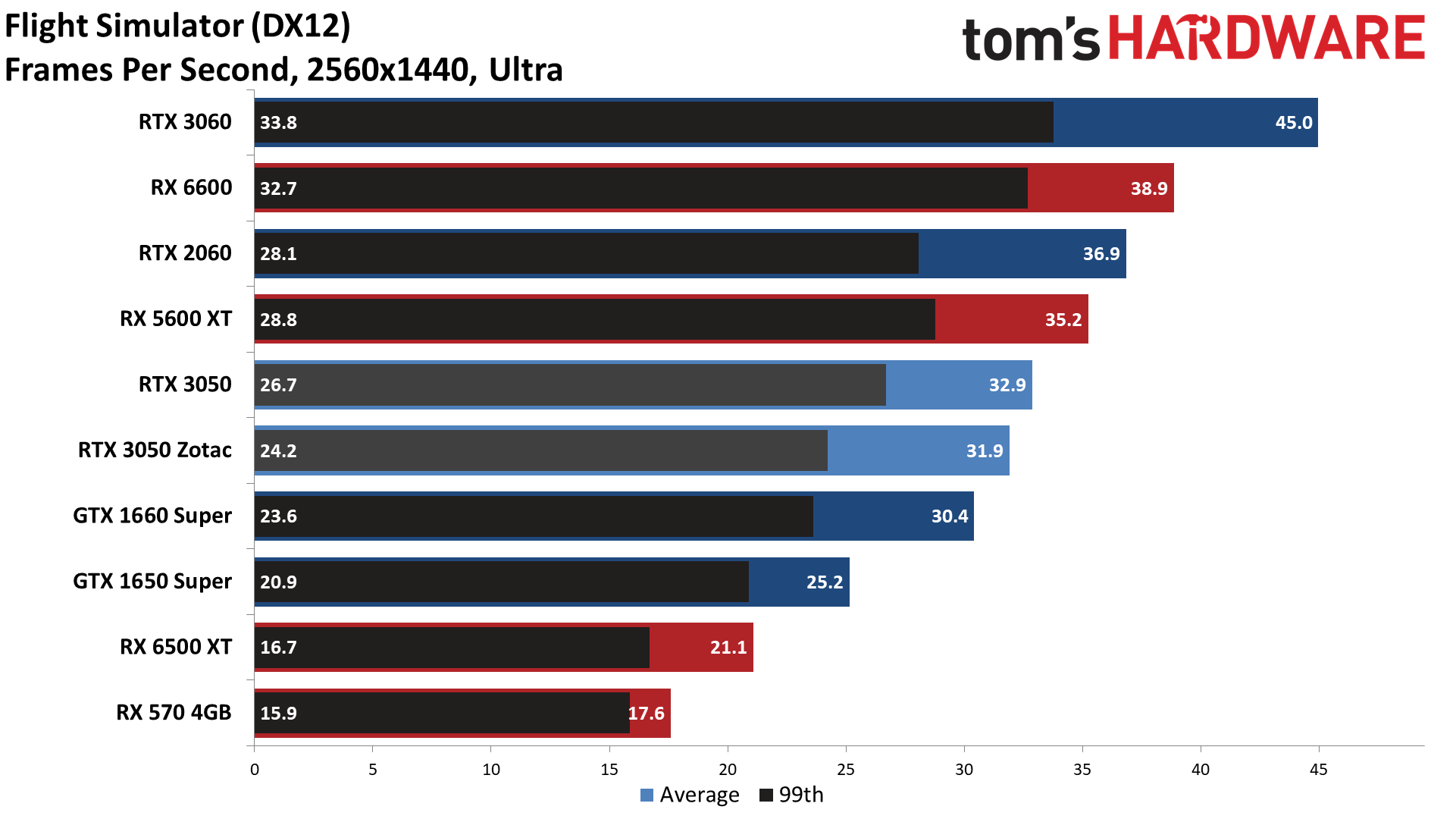
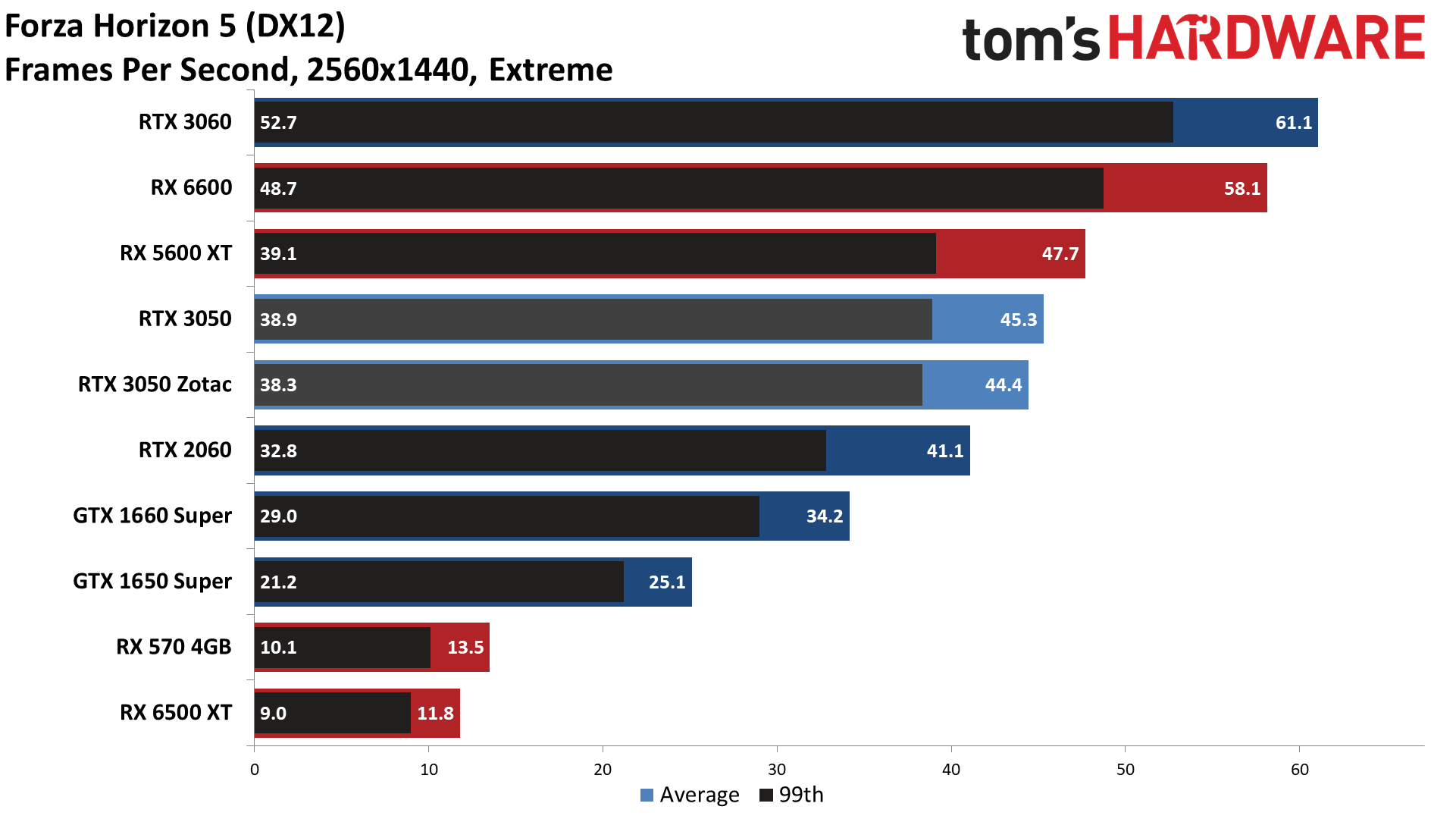

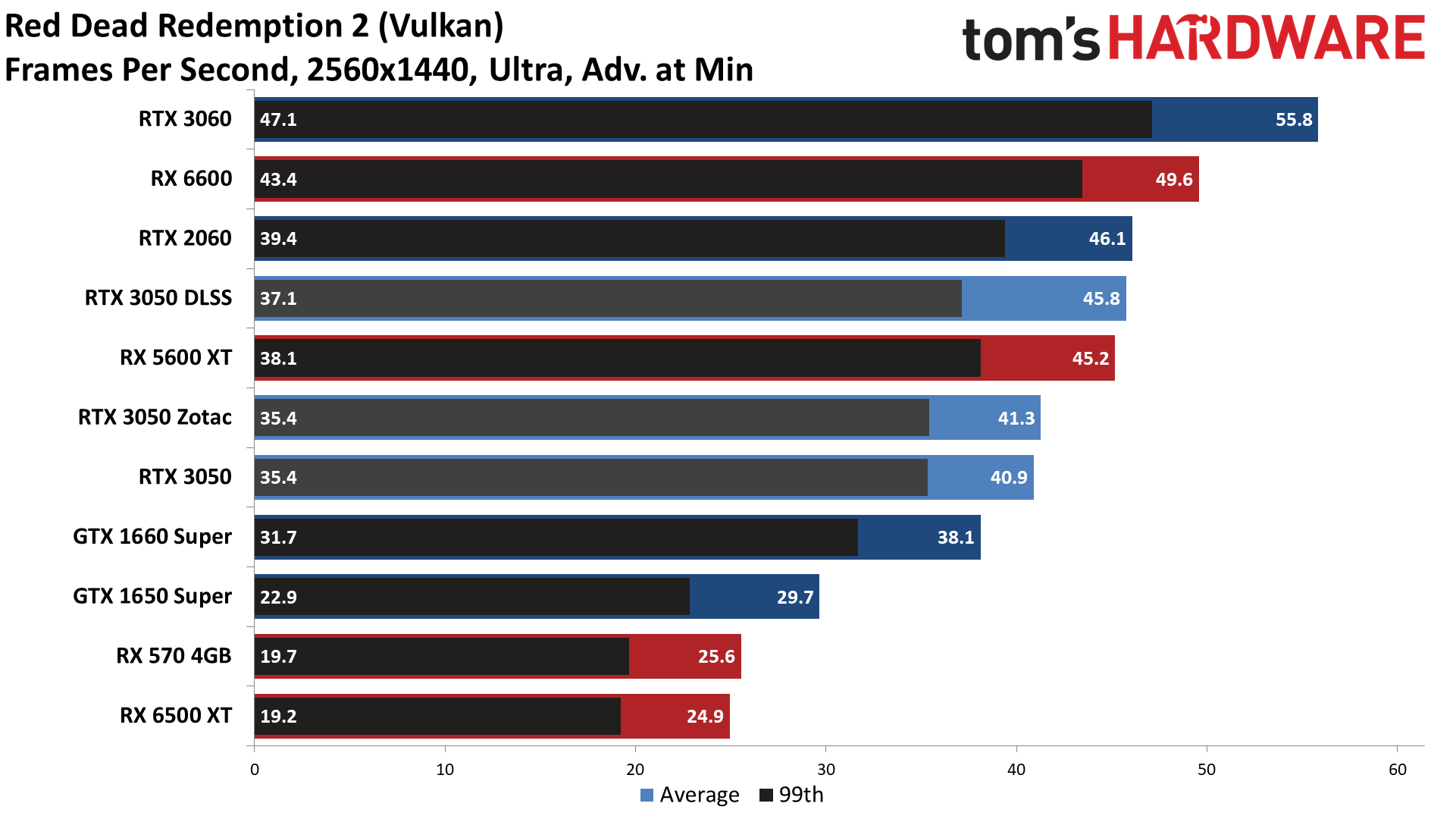

1440p ultra was only borderline playable on the RTX 3050, and interestingly, the Zotac Twin Edge OC actually took a step back from the EVGA this time. It's still margin of error differences, and that makes sense as 1440p will be more memory bandwidth limited than 1080p ultra. Basically, without more memory bandwidth, the Zotac card would end up with the same level of performance even if the GPU clocks could boost higher.
So why didn't we test our overclocked settings at 1440p ultra as well? Mostly due to time constraints, but also because even the maximum 14% improvement in memory bandwidth won't really make a difference. Horizon Zero Dawn might just edge past a 60 fps average, but everything else will still fall in the 30-60 fps range.
Zotac RTX 3050 Ray Tracing Performance
Given what we've seen so far, there's no reason to expect ray tracing to be any different. Of course, we've run our DXR tests just for the sake of completeness, and of course, the overclocked results are in the 1080p ultra gallery. But generally, you'll get the same sort of experience from the EVGA XC Black or the Zotac Twin Edge OC — or from the XC Gaming, standard Twin Edge, and most other RTX 3050 cards besides.
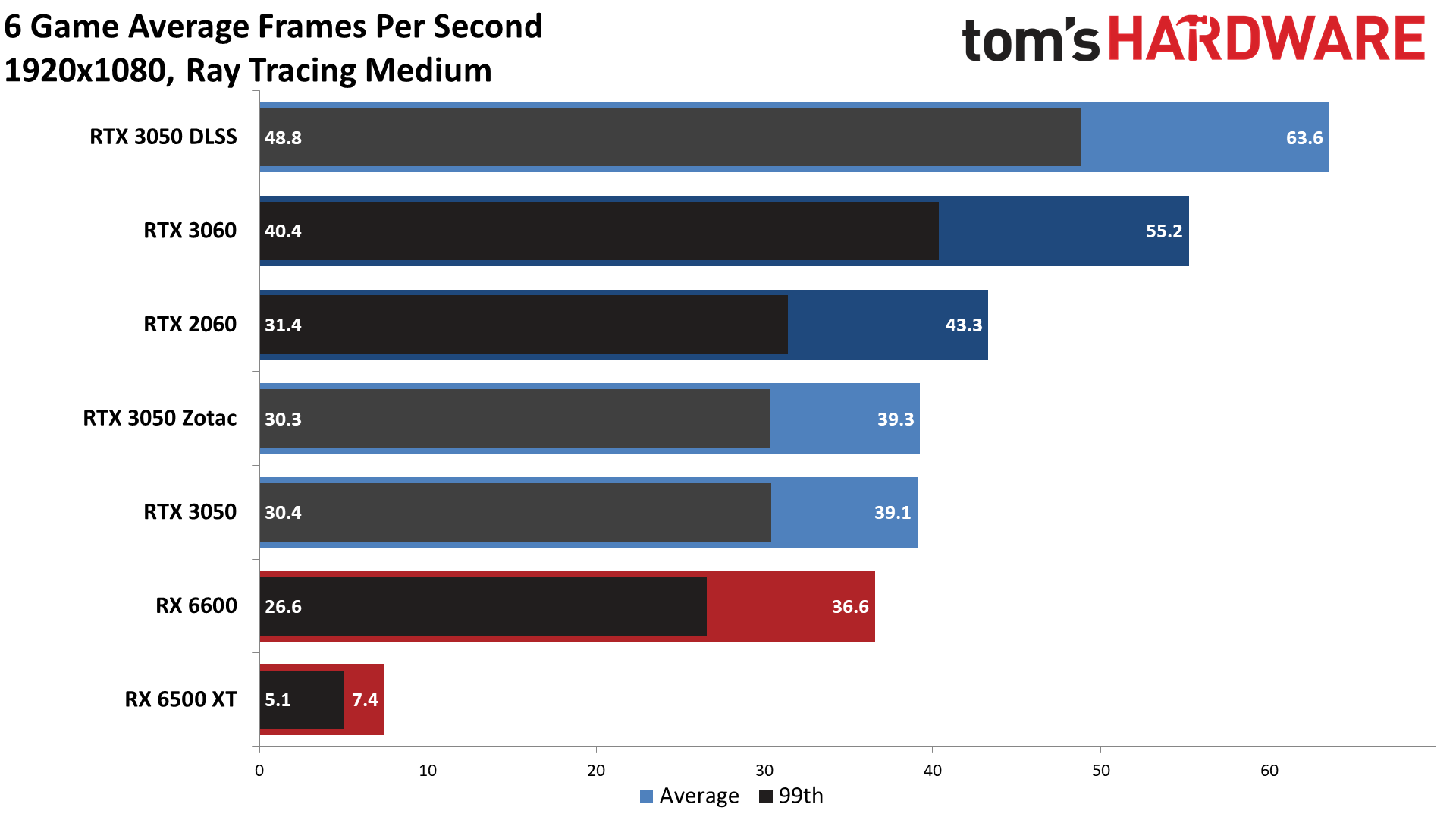

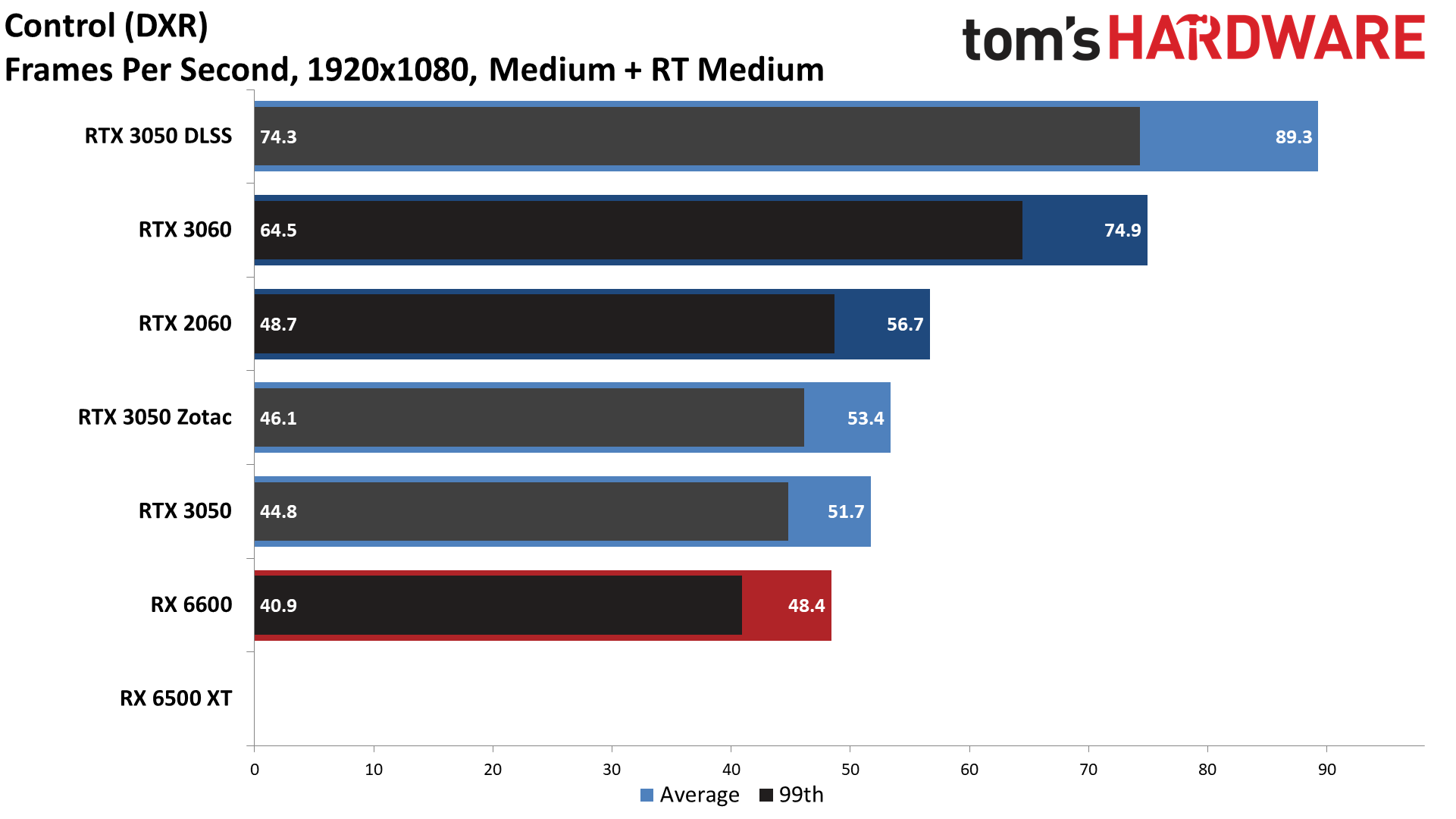
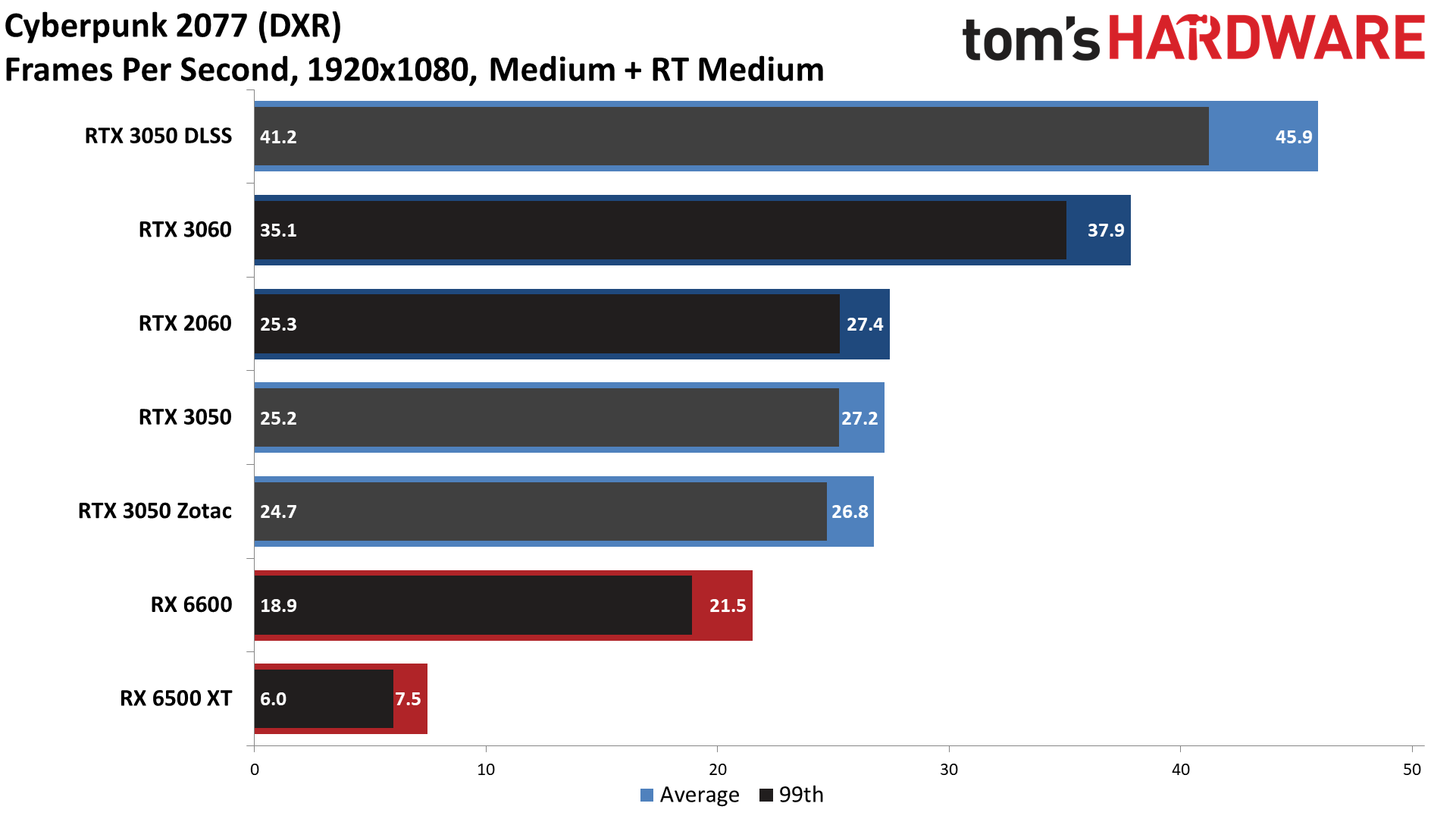

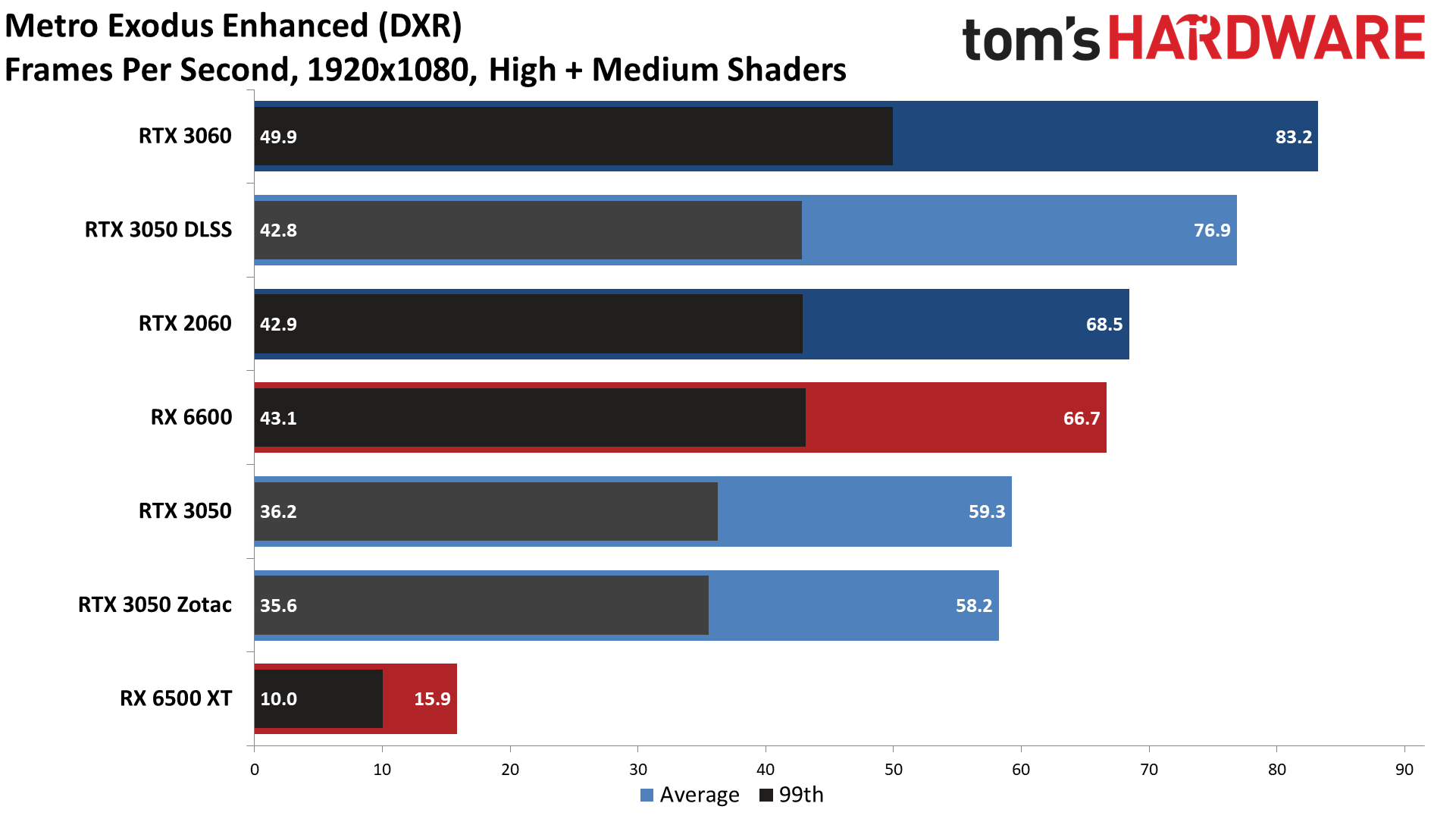
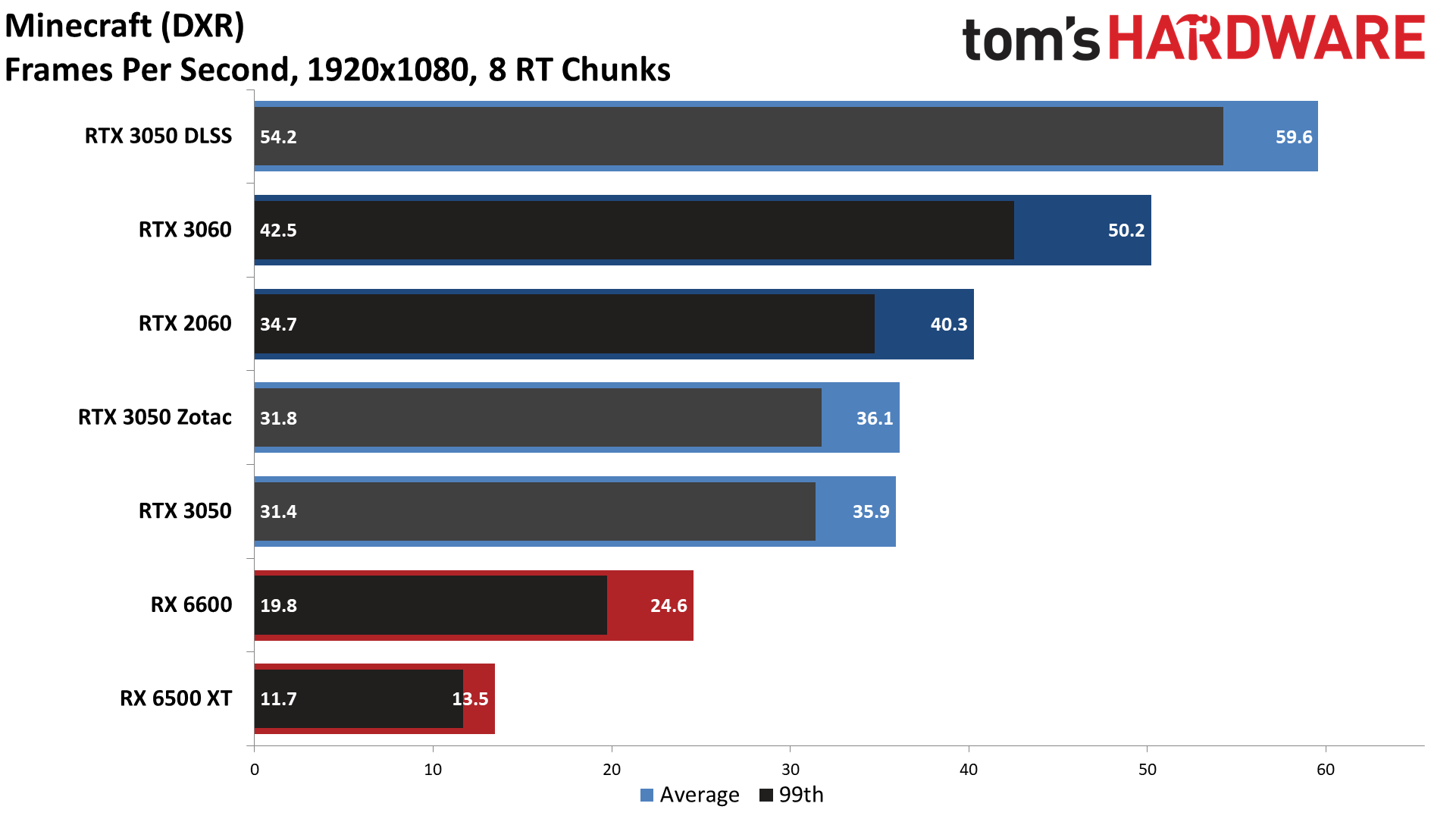

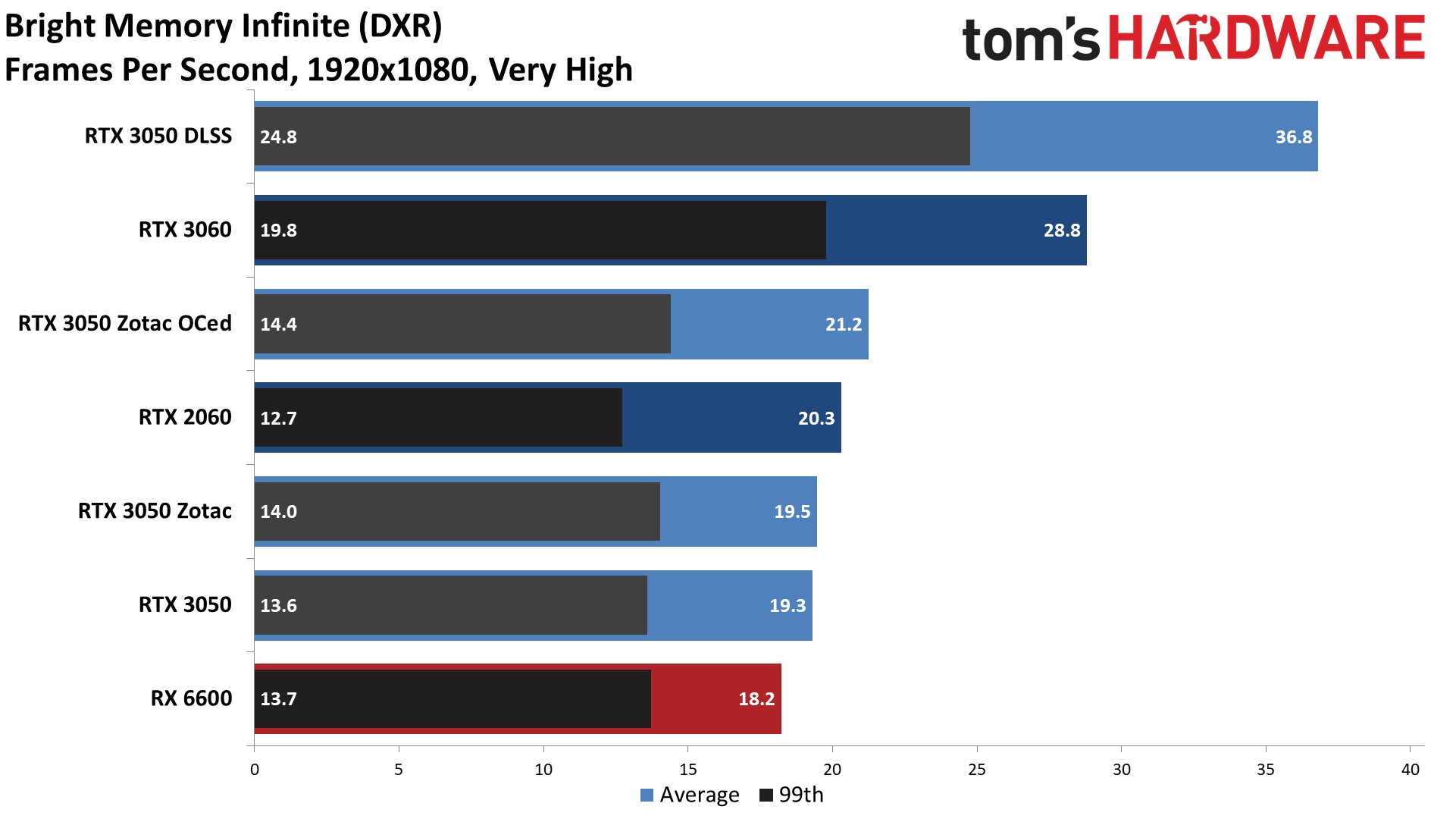
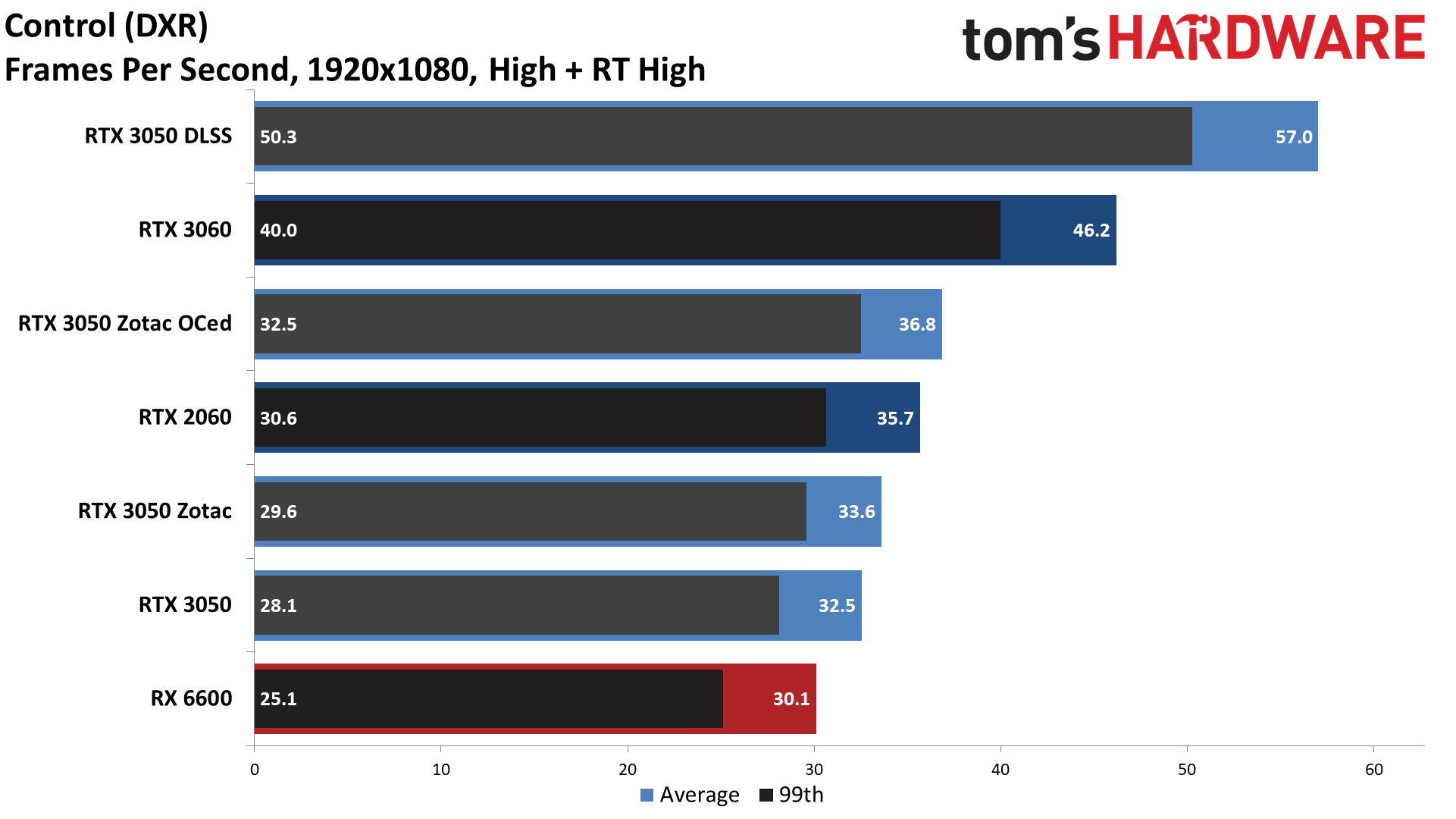
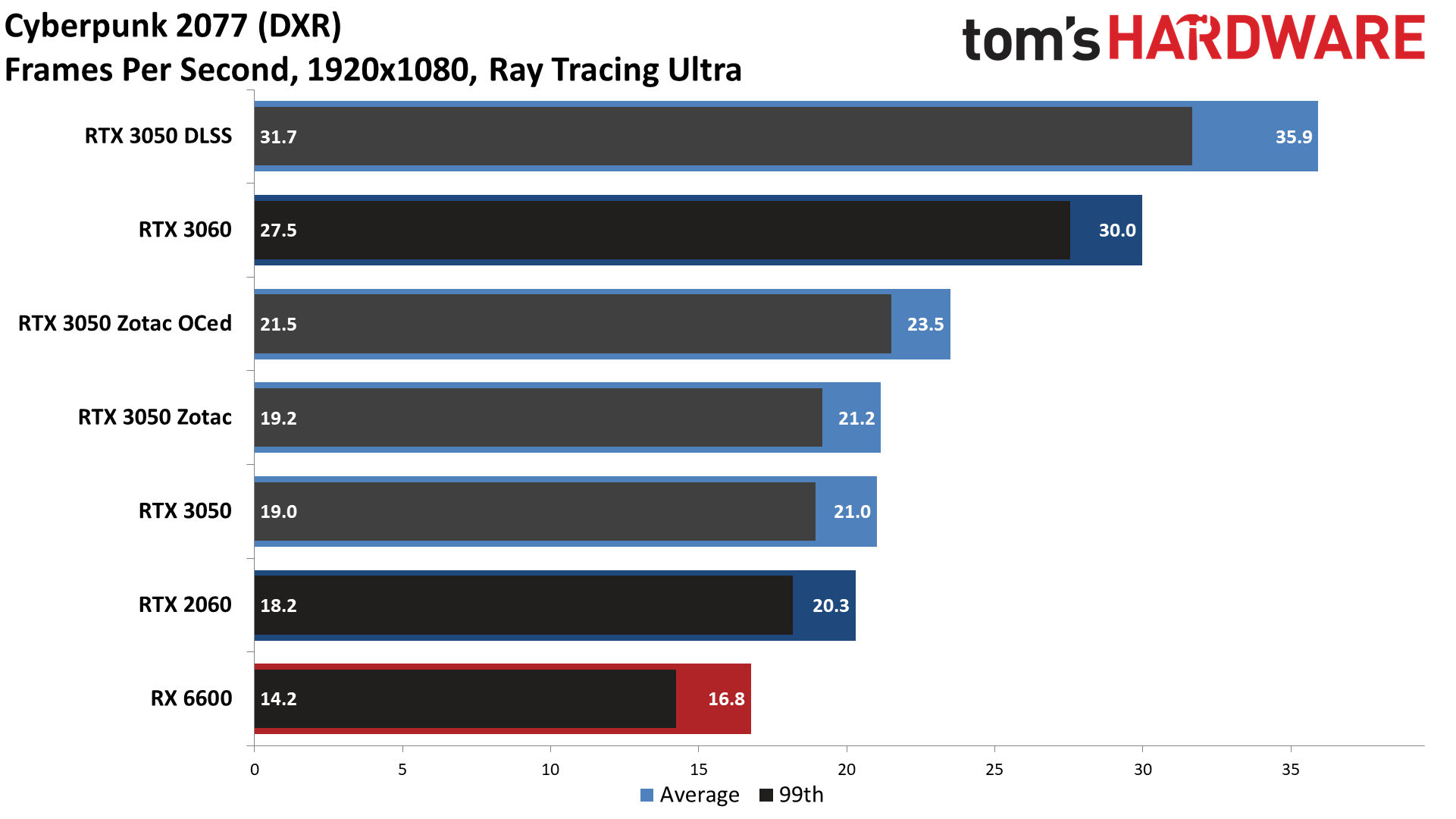
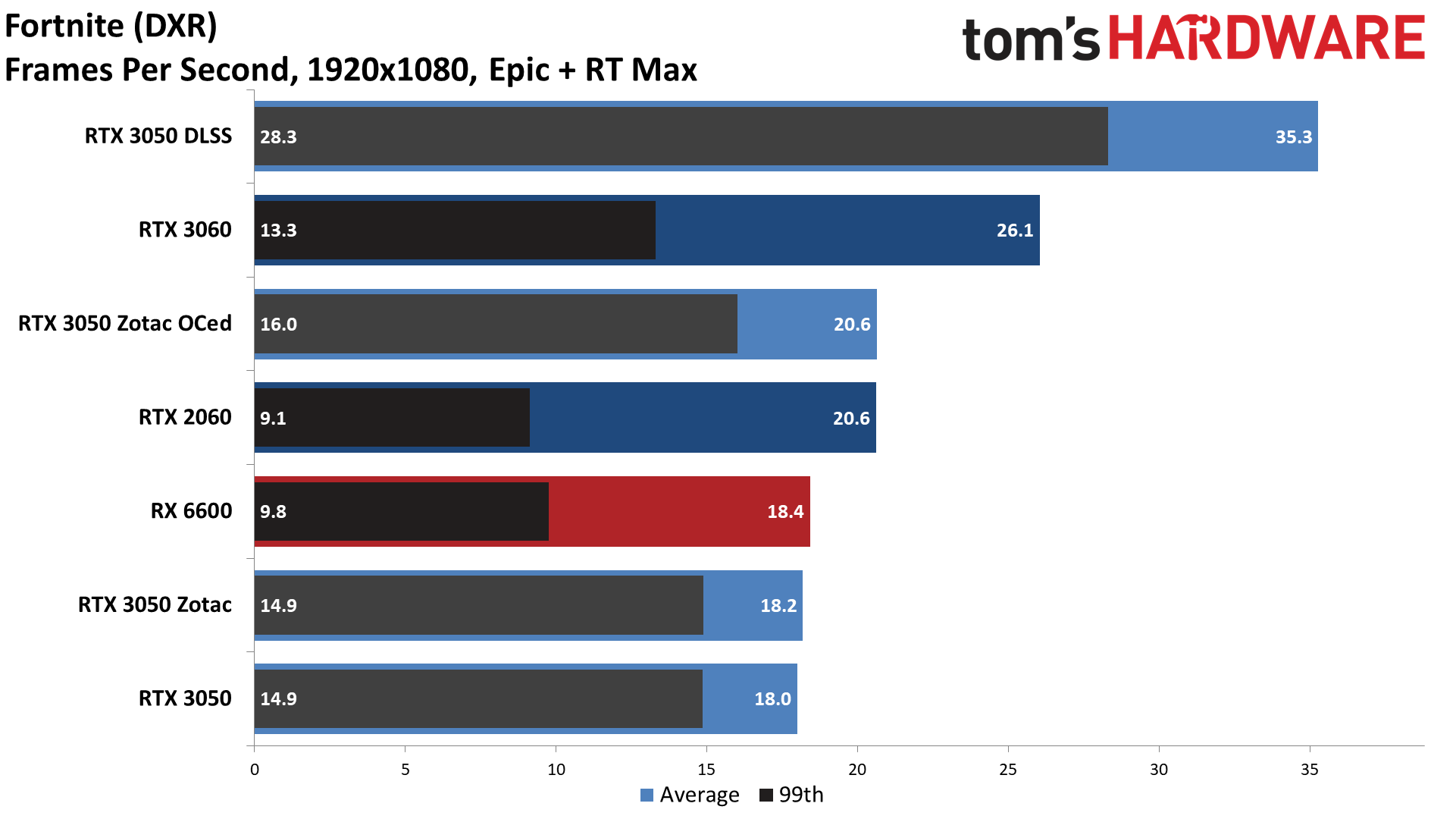
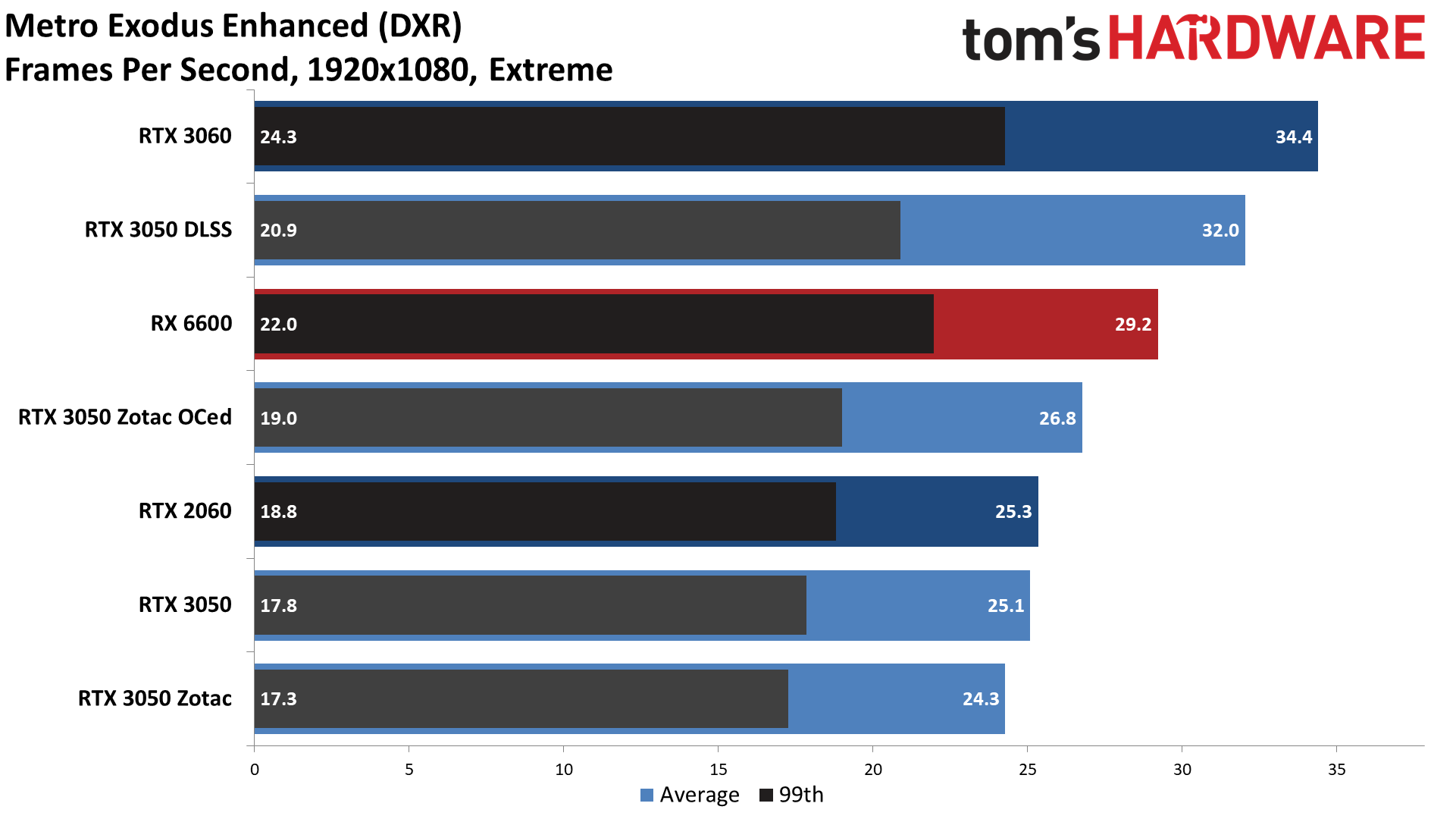
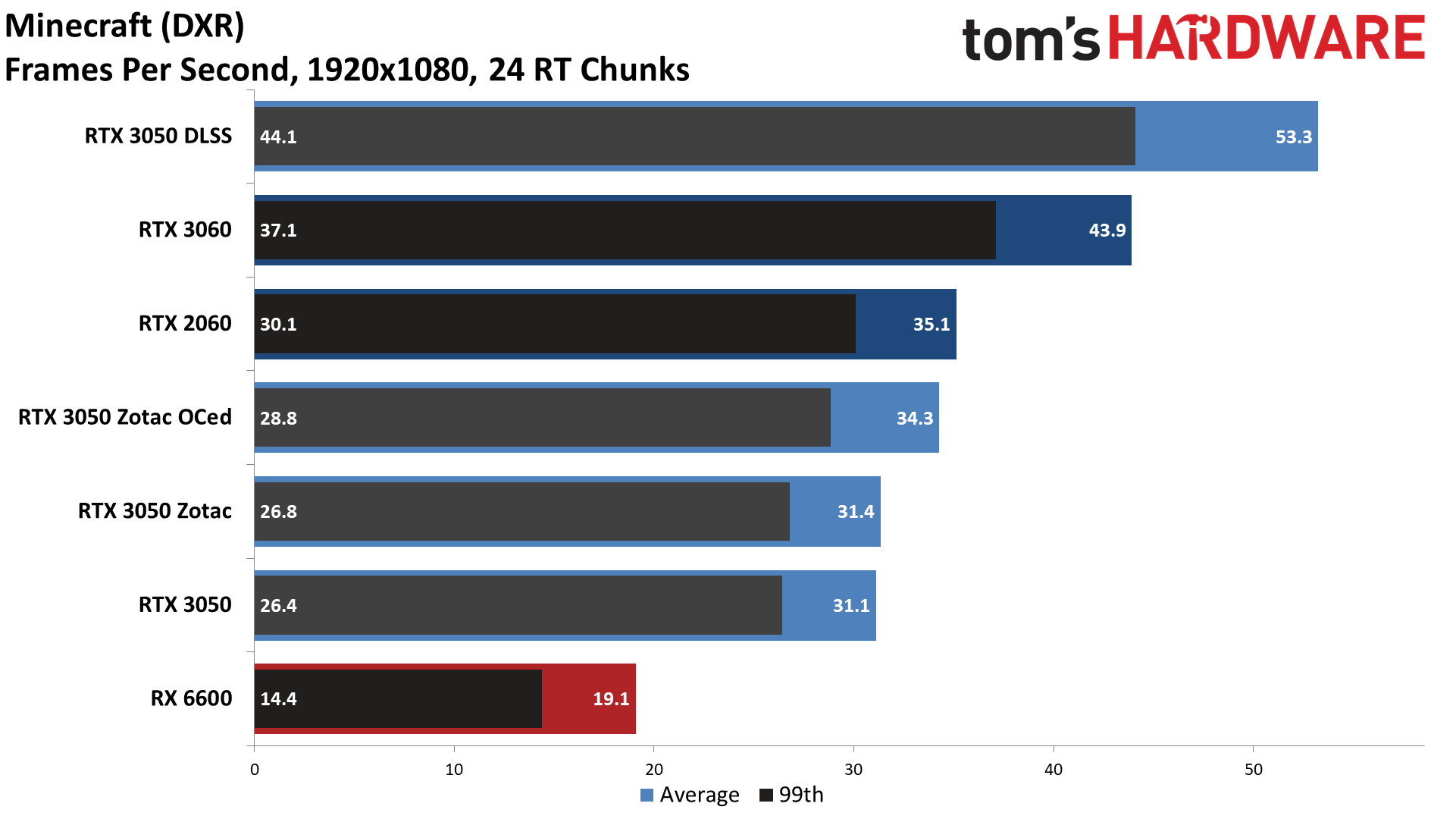
As before, we're mostly dealing with margin of error results. The Zotac Twin Edge OC does average out to 0.4% faster than the EVGA card at 1080p medium with ray tracing and 0.7% faster at 1080p ultra DXR, but none of the results are significantly different. It would take a far higher factory overclock — and a memory overclock as well — to make for a more noteworthy change in performance. Which is what we got from our manual overclock.
The overall performance increase this time was 11%, matching the change in clock speed, but more importantly, we had a few results that dovetail with the 14% boost in memory bandwidth. Fortnite showed the biggest improvement, at 14.6%, and Bright Memory Infinite, Control, Cyberpunk 2077, and Minecraft all showed double-digit percentage gains. Only Metro Exodus Enhanced showed a smaller 7% increase in performance.
- MORE: Best Graphics Cards
- MORE: GPU Benchmarks and Hierarchy
- MORE: All Graphics Content
Get Tom's Hardware's best news and in-depth reviews, straight to your inbox.
Current page: Zotac GeForce RTX 3050 Gaming Performance
Prev Page Zotac GeForce RTX 3050 Twin Edge OC Next Page Zotac GeForce RTX 3050 Power, Temps, Noise, Etc.
Jarred Walton is a senior editor at Tom's Hardware focusing on everything GPU. He has been working as a tech journalist since 2004, writing for AnandTech, Maximum PC, and PC Gamer. From the first S3 Virge '3D decelerators' to today's GPUs, Jarred keeps up with all the latest graphics trends and is the one to ask about game performance.
-
Exploding PSU Checked the local store here right when it finally arrived (this exact model), 810 AUD. I think I'll just wait it outReply -
Agera One The Twin Edge OC model from Zotac on the RTX 3060 had one extra heat pipe than the non-OC model, so the cost increase may be because of hardware changes too. Their 3050 web pages doesn't show any hardware changes though.Reply